
IOL Quest Perfect for the
IN
JULY/AUGUST 2023 | VOLUME 28 | ISSUE 6 AI Could Reduce Refractive Surprises Machine learning helps improve IOL power calculations. Amniotic Membrane Transplantation for OSD Better results with corneal pathologies than limbal stem cell deficiency. Sustainability in Greater Focus International effort to reduce OR waste.
in human trials promise better performance.
ALSO
THIS ISSUE
New designs
https://congress.escrs.org/

BINKHORST MEDAL LECTURE
Jorge L Alió MD, PhD, FEBOphthal will speak on “Corneal Regeneration: The Future of Corneal Surgery.” Dr Alió is a professor and chairman of ophthalmology at the University Miguel Hernández de Elche in Alicante, Spain, and a leader in the emerging topic of corneal regeneration. He conducted the first worldwide clinical trial for the treatment of corneal dystrophies and particularly keratoconus with autologous mesenchymal stem cells, and he has published a series of important scientific papers on this innovative type of corneal surgery.
SMART AND @CTIVE MONDAY
A new addition to the ESCRS Congress, Smart and @ctive Monday will feature “brushups” on retinal surgery, glaucoma surgery, and oculoplastics, a medical writing workshop for young ophthalmologists, an ophthalmic anaesthesia symposium, a surgical video session, and practice management sessions. A “digital track” will offer a “Continents Going Digital” symposium, symposia on automating eye surgery and the digital operating room, and talks and panel discussions about artificial intelligence in ophthalmology.

HERITAGE LECTURE
Marie-José Tassignon MD, PhD, FEBOS-CR will speak about “The Enigma of the Anterior Interface.” Dr Tassignon is the emeritus head and chief of the department of ophthalmology of the Antwerp University Hospital and University of Antwerp. The first female president of ESCRS (2004–2005), Dr Tassignon developed bagin-the-lens cataract surgery for the paediatric population and holds 10 patents (three earned since 2019). She has been published more than 370 times in peer-reviewed journals and is the author of 27 book chapters and two full textbooks in ophthalmology.
iNOVATION DAY
Building on the success of the inaugural iNovation® Day in 2022, ESCRS is hosting the second iNovation Day on Friday, 8 September. Sessions will focus on the most urgent clinical needs and barriers to success in anterior segment care and how new technologies may address those barriers and clinical needs within the next 5–10 years. Of special interest is a new feature, “The Innovators Den: EyeCare Pioneers,” which will highlight entrepreneurs who have personally developed unique ideas to address some of the biggest unmet needs of Congress attendees.

2 EUROTIMES | JULY/AUGUST 2023 04 Editorial: Looking Forward to Accommodative Vision Gerd Auffarth MD, PhD, FEBO 06 Inside ESCRS: ESCRS Members to Elect Four to Council 08 ESCRS at a Glance: ESCRS Winter Meeting Resources Online 09 ESCRS Update: Moving Simulator Project and Masterclasses 10 Sustainability in Greater Focus CATARACT & REFRACTIVE 15 Non-accommodating Presbyopic IOLs Continue to Evolve George O Waring IV MD, FACS 16 LASIK for Ageing Eyes Jorge L Alió MD, PhD, FEBOphth 17 EDOF Lens Shows Function Meets Design Federico Giannuzzi MD 18 Adaptive Optics Pablo Artal PhD 19 Blended Vision with Enhanced Monofocal IOL Reem Aziz MD 20 All-day Near Vision in View Steven J Dell MD, Marc Odrich MD 22 New EDOF Lens Delivers Good Intermediate Vision Cristina A Nicula MD, PhD 23 AI Could Reduce Refractive Surprises Lisa Tasch MD 24 Exploring IOL Options for Yamane Scleral Fixation Wyche T Coleman III MD 25 Multifocal Phakic IOL an Alternative Approach? José L Güell MD, PhD CORNEA 26 Amniotic Membrane Transplantation for Ocular Surface Disease Naomi Carolina Zatarain Barrón MD GLAUCOMA 28 Turning Point for Glaucoma Iqbal K “Ike” Ahmed MD PAEDIATRIC OPHTHALMOLOGY 30 Every Dioptre Counts to Control Myopia Epidemic Serge Resnikoff MD, PhD 12 Cover Quest for the Perfect IOL New designs in human trials promise better performance. July/August 2023 | Vol 28 Issue 6
Publishers
Carey Earle
Mariska van der Veen

Mark Wheeler

Executive Editor
Stuart Hales
Editor-In-Chief
Sean Henahan
Senior Content Editor

Kelsey Ingram
Creative Director
Kelsy McCarthy
Graphic Designer
Jennifer Lacey
Circulation Manager
Nicola Lodge
Contributing Editors
Cheryl Guttman Krader

Howard Larkin
Dermot McGrath
Roibeárd O’hÉineacháin

Contributors
Soosan Jacob
Timothy Norris
George Liu
Colour and Print
W&G Baird Printers
Advertising Sales
Roo Khan
MCI UK
Tel: +44 203 530 0100 | roo.khan@wearemci.com
EuroTimes® is registered with the European Union Intellectual Property Office and the US Patent and Trademark Office.
Published by the European Society of Cataract and Refractive Surgeons, Suite 7–9 The Hop Exchange, 24 Southwark Street, London, SE1 1TY, UK. No part of this publication may be reproduced without the permission of the executive editor. Letters to the editor and other unsolicited contributions are assumed intended for this publication and are subject to editorial review and acceptance.
ESCRS EuroTimes is not responsible for statements made by any contributor. These contributions are presented for review and comment and not as a statement on the standard of care. Although all advertising material is expected to conform to ethical medical standards, acceptance does not imply endorsement by ESCRS EuroTimes. ISSN 1393-8983

Learn more about EuroTimes or connect with ESCRS at ESCRS.org

3 2023 JULY/AUGUST | EUROTIMES
ducation FORUM IN TODAYS PRACTICE SUCCESS WITH Toric and PresbyopiaCorrecting IOLs Included with this Issue Success with Toric and Presbyopia-Correcting IOLs in Today’s Practice 32 Leadership and Business Innovation: Ophthalmology Is Changing Fast. New Skills Can Help You Thrive. 34 Newsmaker: Preparing for Vienna ESCRS President Oliver Findl gives EuroTimes a look behind the scenes on planning the Vienna Congress. 36 Industry News 37 JCRS Highlights 40 Index of Citations 41 Upcoming Events ALSO IN THIS ISSUE 34 32 28 23 10
Looking Forward to Accommodative Vision

As ophthalmologists, we have the special honour and pleasure of restoring the precious sense of sight to our patients. Modern cataract surgery allows us to give patients years of clear functional vision who otherwise would slowly go blind. Newer presbyopic IOLs, such as multifocals and EDOF lenses, offer further improvement, allowing patients to see at different distances. Some think we may be reaching the limit of the benefit we can provide with cataract surgery. There are so many things we can do now that we only dreamed of 10 or 20 years ago. However, one huge challenge remains.
We have yet to reproduce what nature provides us at birth— true accommodating vision at all distances. Shape-changing technology with curvature changes, like that used in fluid-filled accommodative IOLs, looks like a potential solution to achieve sufficient dioptric power. Other new technology should also overcome some of the issues of earlier developments.
As our lead article by Howard Larkin describes, we are finally seeing the beginnings of accommodating IOLs entering clinical use, including the Juvene (LensGen), Lumia (Akkolens), Omnivu (Atia), and the JelliSee lens.
The lead article reminds us IOLs previously labelled as accommodative lenses had numerous problems including durability and magnitude of effect; high rates of posterior capsule opacification (PCO); sizing issues; large insertion incisions; and even fundamental questions about their purported mechanisms of action. Other presbyopia-correcting IOLs based on principles such as diffraction or hybrid technology can induce dysphotopsias such as glare, halos, and starbursts.
The new lenses claiming the mantel of true accommodation or presbyopia correction must pass the tests all IOLs do. What are the short and long side effects? What about dysphotopsia? There are also new questions: How will we do the biometry? Who should receive the lens, and at what age? What will it cost, and who will pay?
An accompanying article in this issue brings us up to date on the fast-changing world of presbyopic IOL development. As George Waring states, “It’s a great time to be presbyopic.”
Several supporting articles examine some of the latest clinical results with EDOFs, the light-adjustable lens, and multifocal phakic IOLs.
If you want to get a close-up look at everything happening in presbyopia treatment, there could be no better place than the annual ESCRS Congress being held this year in Vienna, Austria, 8–12 September. The iNovation event, now in its second year, starts with a session on managing presbyopia from the earliest stages all the way to the cataract stage. You can hear the latest pipeline reports from emerging companies. The Congress programme includes a Main Symposium on presbyopia game changers, a Clinical Research Symposium on cataract and refractive surgery in 2030, and courses and videos on presbyopia management in the modern day. EuroTimes will provide comprehensive coverage of the entire Congress. I hope to see you there!


EDITORIAL BOARD
Noel Alpins (Australia)
Bekir Aslan (Turkey)
Roberto Bellucci (Italy)
Hiroko Bissen-Miyajima (Japan)
John Chang (China)
Béatrice Cochener-Lamard (France)
Oliver Findl (Austria)
Nino Hirnschall (Austria)

Soosan Jacob (India)
Vikentia Katsanevaki (Greece)
Daniel Kook (Germany)
Boris Malyugin (Russia)
Marguerite McDonald (US)
Cyres Mehta (India)
Sorcha Ní Dhubhghaill (Ireland)
Rudy Nuijts (The Netherlands)
Leigh Spielberg (The Netherlands)
Sathish Srinivasan (UK)
Ulf Stenevi (Sweden)
Marie-José Tassignon (Belgium)
Oliver Findl ESCRS President
Thomas Kohnen Chief Medical Editor
José Güell Medical Editor
EDITORIAL 4 EUROTIMES | JULY/AUGUST 2023
Paul Rosen Medical Editor
Gerd Auffarth MD, PhD, FEBO
2023 ESCRS iNovation Day
Friday 8 th September 2023
Messe Wien Exhibition & Congress Centre, Vienna, Austria

Reasons to Attend
Learn of the latest innovative technologies, including presentations from several emerging companies, and perspectives on how they will change the future of European ophthalmology over the next several years.
56 Faculty Members
Including leaders from the medical, industry and financial communities
30 Minute Panel Discussions on
• Presbyopia • Cataract extraction • MDR
• Digital health • Glaucoma • Sustainability
• Industry leadership • F inancial future of eyecare
Multiple Networking Opportunities Review Results of ESCRS
Clinical Trends Survey
Data from over 1,000 delegates will be reviewed on key clinical opinions and practice patterns impacting the integration of the latest technologies
Participate in onsite attendee survey of prevailing trends and barriers
www.inovation.escrs.org
#ESCRS2023 #ESCRSiNovation
Participate in this second iNovation meeting in European Ophthalmology
ESCRS Members to Elect Four to Council
Fifteen cataract and refractive surgeons are standing for election to fill four positions on the ESCRS Council of Management, the Society’s governing body.
The council’s membership includes 10 elected positions, four of which will become vacant at the 2023 Annual Congress in Vienna. The term of office for a council member is four years; council members may stand for re-election for an additional four years.
Only one elected council member is permitted from each country, so ESCRS members from Austria, Belgium, the Czech Republic, Germany, Italy, and Portugal are not eligible for this election and cannot be nominated.
The candidates standing for election are as follows:
• Bruce Allan (United Kingdom)
• Miltos Balidis (Greece)
• Joaquín Fernández (Spain)
• Christina Grupcheva (Bulgaria)
• Andrzej Grzybowski (Poland)
• Farhad Hafezi (Switzerland)
• Volodymyr Melnyk (Ukraine)
• Dominique Monnet (France)
• Ewa Mrukwa-Kominek (Poland)
• Mayank Nanavaty (United Kingdom)
• Nic Reus (The Netherlands)
• Zaid Shalchi (United Kingdom)
• Sathish Srinivasan (United Kingdom)
• Julian Stevens (United Kingdom)
• Kristof Vandekerckhove (Switzerland)
A candidate must be a full member of the ESCRS for at least the immediate past three consecutive years to be eligible to stand for election. A candidate must be nominated by five other full members of the Society; each full member may only nominate one person as a candidate. Candidates may not nominate themselves.
The election closes on 31 August. Election winners will be announced
at the Annual Congress in Vienna and will assume their council positions on 1 January 2024.
Annual Report Highlights
2022 Achievements
ESCRS achievements and initiatives in membership, education, research, charity, and sustainability are among the many topics covered in the Society’s 2022 annual report, which is available on escrs.org.

The 38-page report incorporates videos from ESCRS President Oliver Findl and President-elect Filomena Ribiero as well as Education Committee Chair Rudy Nuijts and Research Committee Chair Burkhard Dick. The report presents data on a wide range of topics, including:
• membership by country and type (national society, regular membership, and trainee);
• titles and recipients of research awards;
• attendance at the 2022 Annual Congress and Winter Meeting; and
• donations to charitable projects, especially in sub-Sharan Africa and Ukraine.
It also highlights the many new initiatives ESCRS developed, launched, and/ or refined in 2022, such as:
IOL online calculator. The ESCRS IOL calculator is a web application for IOL power calculations that incorporates seven modern formulas simultaneously through real-time integration with partner tools (by web scraping or API integration).
Masterclasses. The Society laid the foundation for two 16-hour educational masterclasses in MIGS and complex cataract surgery in 2022. (See “ESCRS Update” on page 9 for the latest on this initiative.)
ESCRS Mission Zero. ESCRS
Mission Zero strives to reduce the carbon footprint of the ESCRS congresses, aiming to be carbon neutral during the 2023 Annual Congress in Vienna. At the 2022 Annual Congress
6 EUROTIMES | JULY/AUGUST 2023
INSIDE ESCRS
Fifteen cataract and refractive surgeons are standing for election to fill four positions on the ESCRS Council of Management.
STUART HALES REPORTS
in Milan, only 3.4% of waste was sent to landfills, 31% incinerated, and 64% recycled or reused. Leftover food was donated to Banco Alimentare-Siticibo, a charity in Lombardy working to encourage food security.
Moving surgical simulator. Another new project that began to take shape in 2022 was the moving simulator initiative. ESCRS is providing an Eyesi Surgical Cataract Simulator on loan to affiliated national societies that need better access to this equipment. The national society in that country will host the simulator to allow its membership time to complete a bespoke ESCRS curriculum. (See “ESCRS Update” for more on this initiative.)
EyeSustain. This global coalition of eye societies and ophthalmologists
to make ophthalmic care and surgery more sustainable was initiated in 2022 by ESCRS, the American Society of Cataract and Refractive Surgeons (ASCRS), and the American Academy of Ophthalmology (AAO).

Sustainable cataract packs. The SIDICS (Sustainability Index for Disposables in Cataract Surgery) Project is an ESCRS-led initiative aiming to create metrics to help cataract surgeons evaluate the overall sustainability of cataract packs (cat packs). The project kicked off with a workshop at the 2022 Annual Congress in Milan.
Young Ophthalmologists for Sustainability (YOFS). Established in the summer of 2022, the YOFS are a team of ESCRS young ophthalmologists, each with the experience or
A brand-new section of ESCRS iNovation Day programme will focus on doctors, scientists, and other entrepreneurs with innovative concepts to share with the global ESCRS network. “The Innovators Den: EyeCare Pioneers” will help these participants, guiding them through creating a compelling pitch and making the idea a reality. A judging panel will choose three participants to present their ideas live, onstage, during the iNovation Day programme in Vienna.
motivation to make ophthalmology sustainable, from 10 different countries. Aid to Ukraine. In April 2022, ESCRS appealed to sister societies, members, and industry for funds to support a variety of initiatives in Ukraine, such as buying eye drops, arranging observerships outside of Europe for Ukrainian trainees, and giving out 30 travel bursaries to attend the ESCRS Annual Congress. Many in-kind donations came from various industry partners, including ophthalmic sutures, instruments, drugs, disposables, endoscopes, and combined Stellaris machines. The 2022 Annual Congress included a symposium devoted to trauma surgery in which numerous Ukrainian surgeons made valuable contributions.
7 2023 JULY/AUGUST | EUROTIMES
ESCRS Winter Meeting Resources Online
Recordings of the main symposia, optics courses, free papers, and e-posters as well as the Cornea Day proceedings from the 2023 Winter Meeting in Vilamoura, Portugal, are now available online for all ESCRS members.
e-Posters
Anterior segment imaging
Cataract surgery complications/prevention
Cataract surgery styles/techniques
Collagen cross-linking
Combined glaucoma/cataract surgery
Combined keratoplasty/cataract surgery
Cornea infectious diseases/surgery
Endothelial keratoplasty
Intraocular lenses (IOLs)
Keratoconus and secondary ectasia
Minimally invasive glaucoma surgery
Ocular surface disease
ESCRS AT A GLANCE
EUROTIMES | JULY/AUGUST 2023 8
Webcasts
ESCRS UPDATE
Moving Simulator Delivered to Romania
The May issue of EuroTimes reported on a project by the ESCRS Education Committee to purchase one or more Eyesi simulators from Haag-Streit and move them from country to country in Europe (“Moving Simulators to Increase Access to Skills Training,” page 6). The project goal is to provide training for young ophthalmologists who otherwise might not have the opportunity to train on a simulator.
“Through this project, ESCRS will intensify its role in providing hands-on skills training, which is of utmost importance to young surgeons,” said ESCRS President Oliver Findl. “This will allow them to undergo a larger part of the curriculum on the simulator, which is not possible at our Annual Congress due to the restricted time frame.”
A simulator was purchased in May and has been delivered to Romania. The 2023 schedule for the simulator is as follows:
• Romania: 6 June – 22 July
• Ukraine: 2 August – 2 September
• Austria: 7 September – 24 October
During its initial stay in Austria, the simulator will be at the ESCRS Annual Congress in Vienna. The simulator will then move to the Association of Austrian Ophthalmologists headquarters, which is also in Vienna.
More than 100 Apply for Masterclasses
More than 100 ophthalmologists applied for acceptance to masterclasses offered by ESCRS in microinvasive glaucoma surgery (MIGS) and complex cataract cases. The masterclasses—described in the April issue of EuroTimes (“Masterclasses Aim to Replace Anxiety with Proficiency,” page 6)—will include the following components:
• Each participant will be assigned a mentor who will answer questions and provide advice throughout the programme. Participants will be part of a small WhatsApp group with direct access to their mentor.
• Each masterclass will comprise four topic-focused online modules (for example, a module about subconjunctival and suprachoroidal implants will be included in the MIGS masterclass).
• Four interactive webinars with all faculty members and WhatsApp groups will be presented in each masterclass to summarise each module in turn and answer any questions.
• An in-person, half-day Grand Rounds Case Review will be conducted at the ESCRS Annual Congress, as will in-person, half-day wet/dry labs.
Each participant who completes all components and passes the exam will obtain a certificate of completion and receive a financial credit to apply to future ESCRS registration and membership fees.
The complex cataract masterclass is being led by Richard Packard, with Michael Amon, Roberto Bellucci, David Lockington, Sorcha Ní Dhubhghaill, and Ana Prinz serving as mentors. Ziad Khoueir is leading the MIGS masterclass; Leon Au, Henny Beckers, Syril Dorairaj, Karsten Klabe, Verena Prokosch, and Andrew Tatham are the mentors.
9 2023 JULY/AUGUST | EUROTIMES
Optics Course Cornea Day Main Symposium ESONT Free Paper Young Ophthalmologists
Basic
Sustainability in Greater Focus

With more than 90% of European ophthalmic surgeons expressing concern in an ESCRS survey, reducing waste is a high-priority goal, Dr Oliver Findl said at the opening session of the 2023 American Society of Cataract and Refractive Surgery (ASCRS) annual meeting in San Diego. The session featured EyeSustain, a coalition of ophthalmic societies around the world, and other efforts to reduce the environmental impact of ophthalmology.
Dr Findl, ESCRS president and an EyeSustain advisory board member, discussed efforts to reduce surgical waste, focusing first on a study of cataract surgical packs in Austria.
“What we saw is a huge variability: sometimes huge drapes, a lot of syringes, and so forth,” he said. “If we reduce that waste to the smallest common denominator, we could reduce the carbon footprint 30%—and that’s without a change in quality.”
To accomplish the reduction, the ESCRS created SIDICS, the sustainability index for disposables in cataract surgery, which will launch at the ESCRS Congress in Vienna, Dr Findl said. In addition to rating the volume of supplies, the index assesses their environmental impact.
“That’s an opportunity for everybody to calculate their own cat pack and compare it to a benchmark. It’s something we are doing right now to get the low-hanging fruit.”
Global effort
Dr Findl then turned to the many ESCRS efforts to make ophthalmology more sustainable. The Society partners with 31
other ophthalmic societies in EyeSustain, based in Europe, the Americas, Africa, Asia, Australia, and New Zealand. It also is a primary supporter of EyeSustain with ASCRS and AAO.
Recognising the strength of its Young Ophthalmology sector, the Society then formed the Young Ophthalmologists’ Sustainability Committee. “Young ophthalmologists are the real drivers, and I think they should be the main drivers,” Dr Findl said.
Mission Zero is yet another ESCRS sustainability initiative. Its goal is to have a congress with zero waste to landfills, and zero net carbon emissions that will be a role model for social responsibility.
The programme launched at the 2022 Milan Congress, “where we tried to reduce waste and red meat, as well as using reusable ESCRS water bottles,” said Dr Findl, noting ASCRS distributed similar reusable containers at the San Diego meeting. The goal for the 2023 Vienna Congress is to be completely carbon neutral in part by offsetting travel emissions, he added.
Industry on board
Dr John A Hovanesian reviewed the industry’s contribution. “The companies who sell us the equipment and supplies we use in surgery are every bit as interested in sustainability as we surgeons and our staffs are,” he said.
EyeSustain, directed by Dr David F Chang, has organised a think tank with leading ophthalmic supply companies to brainstorm ideas and innovations. Among the practices that have emerged is doing away with the lengthy instructions
10 EUROTIMES | JULY/AUGUST 2023 SUSTAINABILITY
Reducing disposables a primary goal for global ophthalmological societies.
HOWARD LARKIN REPORTS
If we reduce that waste to the smallest common denominator, we could reduce the carbon footprint 30%—and that’s without a change in quality.

in several languages that used to accompany every piece of equipment. “Now it’s going to become a QR code,” Dr Hovanesian noted. This change alone means smaller packaging, less shipping, and fewer trucks on the road.
Upcoming changes include smaller injectors using less plastic and increased use of biodegradable materials. EyeSustain is working with device manufacturers and other medical specialties to help spread best practices.
Oliver Findl MD, MBA, FEBO is president of the ESCRS, an advisory board member of EyeSustain, and professor and chair of ophthalmology at Hanusch Hospital in Vienna, Austria. oliver@findl.at
John A Hovanesian MD is a practicing ophthalmologist in Laguna Hills, California, US, and a faculty member at the Jules Stein Eye Institute of the University of California, Los Angeles. jhovanesian@mdbackline.com
The new GONIO ready ® changes the way of your Glaucoma Surgery
Two-handed MIGS surgeries are now possible for the first time! The OCULUS GONIO ready® seamlessly integrates with the microscope giving surgeons the freedom to utilize both hands during MIGS.
• Single-use for excellent optical quality
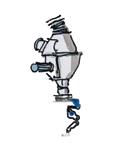
• Unique Flex System for maintained contact with the cornea
• More safety for surgeons

and patients

11 2023 JULY/AUGUST | EUROTIMES www oculussurgical co m /migs +49 6 41 2005-298 855-SDI-BIOM (Toll Free, US Only) The availability of products and features may vary by country. OCULUS reserves the right to change product specifications and design.
the OCULUS team or your local distributor for more information and a no-obligation trial. Satellite Symposium at ESCRS! Sunday, 10 September, 9:30 – 10:30 h, Strauss I Pentacam ® AXL Wave / Corvis ® ST / Myopia Master ®
Contact
30%
Presbyopia results from the loss of flexibility of the natural crystalline lens, which progressively limits its ability to change focus with age. So, replacing the sclerotic natural lens with an accommodating intraocular lens (AIOL) would seem the ideal solution to restore the full range of vision—at least in theory.
Even so, producing an AIOL that reliably provides sharp focus while minimising visual disturbances across a continuous range of near, intermediate, and far distances has proven difficult. The lens must be both stable enough to provide good base refraction yet sensitive enough to change power in response to minute accommodative impulses, said Dr Pablo Artal, who has patented a lens theoretically capable of accommodation yet to be tested. “It’s a daunting challenge,” he added.
AIOL-labelled lenses have been available in Europe for more than two decades, and they generally deliver a broader defocus curve than monofocal IOLs. And while they vary considerably in design, ACIOLs have been plagued by a variety of issues. These include durability and magnitude of effect; induction of dysphotopsias such as glare, halos, and starbursts; high rates of posterior capsule opacification (PCO); sizing issues; large insertion incisions; and even fundamental questions about their purported mechanisms of action.

Yet, the theoretical payoff is so great that the quest for improved AIOLs continues. And there’s progress, said Dr Thomas Kohnen. “There are several products which are promising at the moment.”
3.0 D+ accommodation for 36 months
Given the capsular bag’s tendency to fibrose and stiffen over time, whether lenses relying for accommodation on ciliary muscle contractions transmitted through the bag will function long-term is a significant question. Recently released 36-month results of the Juvene (LensGen) modular, shape-changing fluid-optic AIOL give a reason for optimism.
Among 18 eyes evaluated, including 10 in 5 bilaterally implanted patients, the mean distance-corrected monocular defocus curve was above 20/40 from approximately +1.5 D to -2.0 D. This roughly 3.5 D accommodative range yielded mean distance-corrected visual acuity (VA) values of 20/18 at 4 m distance, 20/32 at 60 cm intermediate, and 20/44 at 40 cm near, Dr Sumit Garg reported at the 2023 ASCRS annual meeting. “You get uninterrupted vision from distance to intermediate to near,” he said, noting binocular results were even better.
12 EUROTIMES | JULY/AUGUST 2023 COVER ARTICLE
New designs in human trials promise better performance.
HOWARD LARKIN REPORTS
IOL Quest Perfect for the

Both the 36-month monocular and binocular results were very similar to or even a bit better than the 12- and 24-month results, though many patients were lost to follow-up over time due to COVID, non-IOL-related adverse events, and death (unrelated to the IOL). Mean uncorrected manifest refractions were also stable over 36 months. The durability of the refractive and accommodative results speaks to the effectiveness of Juvene’s bag-filling design, which has shown low PCO rates with good stability in both clinical and animal studies. “It’s very gentle; we are not seeing any zonular instability, no pseudophacodonesis, or PCO,” Dr Garg said.
Juvene also provides mesopic contrast sensitivity similar to a monofocal IOL. “We talk about range of vision and quality of vision but not both at the same time,” he said. “A lens like this allows us to do both at the same time.” The results are good enough to win approval from the FDA for a pivotal trial. LenGen is currently raising money to pay for it.
Another AIOL demonstrating a subjective accommodative amplitude of about 3.0 D above 20/25 is the Lumina (Akkolens). A custom-sized lens implanted in the sulcus, it consists of two optical elements that slide across each other under accommodative effort. The lens has retained its accommodative range for up to 3.3 years, Professor Jorge Alió reported at the 2022 ESCRS Congress in Milan. A company statement said the Lumina is CE marked and will soon be commercially available at select outlets in Europe.
7.0 D accommodation in development
Nonetheless, replicating the accommodative amplitude of the young adult eye requires more than a 3.0 D range. Providing a full range of vision requires about 7.0 D to maintain a 50% reserve for sustained near focus, said paediatric ophthalmologist Dr Forrest J Ellis. The JelliSee lens he developed may deliver.
The JelliSee lens is an in-the-bag, fluid-filled AIOL with a fixed power posterior surface and a nearly flat, flexible, curvature-changing anterior surface. The anterior surface diameter increases slightly when the ciliary muscles relax. The force is transmitted by eight haptic arms attached near the anterior surface perimeter, mimicking the attachment points of the zonules to the natural lens. Placing these attachment points just 500 microns anterior to the lens equator increases dioptric power change five-fold, Dr Ellis said.
Mathematical modelling suggests this lens can achieve more than 7.0 D accommodative amplitude with less than 0.2 mm diameter change with excellent image quality across the range, which is within the range of movement available with an older capsule. Lab tests confirmed these theoretical results, and a primate model demonstrated 7.0 D of accommodative amplitude 15 months after implantation, he said.
Also in clinical trials is the FluidVision (Alcon)—a flexible hydrophobic acrylic body filled with silicone oil. Fluid squeezed from peripheral reservoirs changes the lens’s shape to reportedly achieve about 2.2 D of objective accommodation. The lens fills the capsular bag and shows very low PCO rates.
The OmniVu (Atia Vision) is a modular shape-changing IOL with a fixed anterior optic and a fluid-filled, shape-changing base. The lens base is also designed to fill the capsular bag, and both components contain refractive power. Preliminary results from the first-in-human trial involving 25 eyes in 18 patients (9 implanted bilaterally, 9 with the OmniVu in just one eye) showed a mean 20/20 monocular uncorrected distance vision six months after implantation, 20/25 intermediate, and 20/32 near, Dr George O Waring IV reported at the 2023 ASCRS annual meeting. Ninety-five percent of eyes were within 0.5 D of plano at six months. For patients with the OmniVu lens implanted bilaterally, binocular uncorrected vision averaged 20/16 distance, 20/20 intermediate, and 20/32 near.
These promising results appear to be holding up in first-inhuman pilot studies. One day after JelliSee lens implantation in a 59-year-old female, she was reading 20/16-3 at distance and 20/25 ultra-near at 20 cm, both with distance correction for astigmatism, Dr Ellis reported. Similarly, six months after implantation, a 69-year-old male read 20/25-2 at distance, 20/25-3 at near 40 cm, and 20/25 ultra-near at 20 cm uncorrected, with a manifest refraction of +0.50 D, -0.75 x 45. “We actually had to blow the [ultra-near] vision chart up because no one could see what he was reading,” he said.
Dr Ellis is confident the mechanism will hold up, noting the ciliary muscle has been shown to continue contracting in patients well into their 80s. The lens’s haptic actuators are designed to scar into the lens capsule periphery, and it actually gained accommodative amplitude as the capsule fibrosed in the primate model, he reported. “Fibrosis is actually our friend.”
Premium lenses for more
A big advantage of AIOLs is their image quality makes them potentially suitable for many more patients than multifocal lenses, Dr Garg said. “It’s non-diffractive, so you are not
14 EUROTIMES | JULY/AUGUST 2023 COVER ARTICLE
An accommodating IOL is possible: one that can provide excellent quantity of vision, excellent quality of vision, a full range of dioptric powers, and can be placed in the bag through a small incision.
losing any luminance to the retina and don’t have to worry about glaucoma or retina or whatever it is—you can still give them some range of vision.”
Dr Ellis agreed. “An accommodating IOL is possible: one that can provide excellent quantity of vision, excellent quality of vision, a full range of dioptric powers, and can be placed in the bag through a small incision.”
Still, several challenges remain, among them choosing a proper A constant to determine lens base power. Lens durability also remains an open question. Only more time and testing will tell.
“It’s a long journey, it’s innovation,” Dr Kohnen said. “We will get there, but I don’t know when.”
Pablo Artal PhD is professor of physics, specialising in optics at the University of Murcia, Spain. pablo@um.es
Thomas Kohnen MD, PhD, FEBO is professor and chair, Department of Ophthalmology, Goethe University, Frankfurt, Germany, and ESCRS treasurer. kohnen@em.uni-frankfurt.de
Sumit Garg MD is professor of ophthalmology at the University of California, Irvine, US, and serves on the scientific advisory board of LensGen Inc. gargs@uci.edu
Jorge L Alió MD, PhD is professor and chairman of ophthalmology at Miguel Hernández University of Elche and Founder of Vissum Miranza in Alicante, Spain. jlalio@vissum.com
George O Waring IV MD is founder and medical director of the Waring Vision Institute, Mt Pleasant, South Carolina, US. gwaring@waringvision.com
Forrest J Ellis MD is a paediatric ophthalmologist and founder and CEO of JelliSee Ophthalmics, McLean, Virginia, US. jim@jellisee.com
Non-accommodating Presbyopic IOLs Continue to Evolve
Continued innovation in materials and design are improving the performance of multifocal (MIOL) and extended depth of focus (EDOF) IOLs, Dr George O Waring IV said at the 2023 ASCRS annual meeting.
“Typically, when we increase depth of field, we decrease visual quality and increase dysphotopsias, and isn’t that the conundrum?” Dr Waring asked. Crediting both Dr Daniel Chang, Managing Partner of Empire Eye and Laser Center in Bakersfield, California, US, and Dr Damien Gatinel—who heads anterior and refractive surgery at the Rothschild Foundation, Paris, France—he described some of the optical compromises of MIOL and EDOF lenses and even monovision.
For diffractive lenses, the larger the number of ridged steps, the greater the add power, while the step height controls the light split between diffracted and non-diffracted light. The resulting overlap of the split images and light scatter produces dysphotopsias, including glare, halos, and starbursts. The greater the added defocus, the greater the dysphotopsias tend to be. Defocus alone also can cause dysphotopsias, an occasional result of correcting one eye for near vision in monovision, he added.
Light filtering
Selective light filtering may be one way to reduce dysphotopsias. “We’ve learned that high-energy violet light scatters more, and we’re seeing a lot of it from LED light sources,” Dr Waring said. “Filtering it out reduces light scatter appreciably.” High-resolution lathing of IOLs is another way to cut light scatter, he added.
Compared with earlier versions, the newer Tecnis Symfony OptiBlue (Johnson & Johnson), which incorporates both blue light filtering and high-resolution lathing, patients reported up to 46% fewer dysphotopsias, especially halos, according to research by Dr Daniel Chang.
“They still had the dysphotopsias—it’s not a miracle they didn’t disappear—but [the lens] seemed to be selective for spiderwebbing in particular,” Dr Waring said. “Our experience mirrors that, with probably about a one-third reduction in dysphotopsia complaints.” As a result, he commonly uses the Synergy and Symfony with OptiBlue in patients.
Materials and manufacturing
Optimising lens materials may also improve image quality. The Clareon (Alcon) range of IOLs incorporates new hydrophobic acrylic material highly resistant to glistening development or microvacuoles that can increase light scatter over time. “The new material was an answer to that. It basically eliminates glistenings out to nine years in the literature,” Dr Waring said.
The FineVision HP (BVI) trifocal is another MIOL that benefits from glistening-free materials and advanced manufacturing to reduce dysphotopsias. A convolution process smooths the tips of diffractive ridges, which reduces the impact of defocus of near images in low light, he said.
Other presbyopic IOL designs that reduce dysphotopsias while providing a range of vision depth include the SBL-2 ClearView 3 segmented bifocal (Lenstec) and the IC-8 Apthera (Bausch + Lomb) pinhole lens. Though not without their own dysphotopsias, these lenses can be used in a variety of patients with relatively favourable dysphotopsia profiles, Dr Waring said.
“It’s a great time to be presbyopic,” he said. “The technology keeps improving, and there are a lot of new options on the horizon.”
15 2023 JULY/AUGUST | EUROTIMES
George O Waring IV MD, FACS is founder and medical director of the Waring Vision Institute, Mt Pleasant, South Carolina, US. gwaring@waringvision.com
LASIK for Ageing Eyes
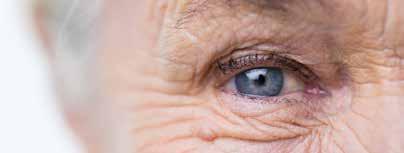
PresbyLASIK remains a competitive option for presbyopes.
ROIBEÁRD O’HÉINEACHÁIN REPORTS
PresbyLASIK can provide patients with a depth of field equivalent to that provided by multifocal and extended depth of focus IOLs and is stable over time, said Professor Jorge L Alió.
“For us as clinicians, presbyLASIK is a very simple technique,” he explained. “It is minimally invasive and does not mutilate the crystalline lens. In addition, it can rejuvenate the patient’s eye by compensating for the increasing positive spherical aberration of the lens that occurs with age. Moreover, LASIK is a well-developed surgery loved by patients, and more than 25 million patients have undergone the procedure.”
He noted the term covers a range of LASIK techniques that aim to increase the depth of field in the presbyopic patient’s eyes by creating multifocality in both eyes using central, peripheral, or transitional profiles. Central presbyLASIK creates a central hyperpositive area for near focus and a peripheral area for distance. In peripheral presbyLASIK, the centre area provides the distant focus while the peripheral ablation provides the near focus.
Currently available platforms
PresbyMAX (Schwind) is a form of central presbyLASIK platform developed by Prof Alió and his associates and later by Schwind. It creates a hyperpositive central area in the cornea that can achieve -0.75 D to -2.50 D in near vision correction and a peripheral area calculated to correct the distance error. Another central presbyLASIK technique is Supracor (Technolas Perfect Vision), an aberration-optimised presbyopic algorithm only developed for hyperopes.
Peripheral presbyLASIK techniques include the AMO VISX approach for hyperopic presbyopes, which treats up to +4.0 D of hyperopia and -2.0 D of astigmatism. The Presbyond Laser blended vision performed with the Carl Zeiss Meditec laser induces a small degree of monovision and negative spherical aberration to increase the depth of field. It can be performed on emmetropic, myopic, and hyperopic presbyopes.
Central presbyLASIK has the advantage of requiring minimal central ablation to increase the near defocus up to -3.8 D and covers the whole distance range due to different foci for distance, intermediate, and near. It is also typically bilateral, which maintains stereopsis. It has the disadvantage of being pupil size dependent, can reduce contrast sensitivity, and requires neuroadaptation to multifocal optics.
Peripheral presbyLASIK has the advantage of requiring minimal ablation at the corneal centre. It can provide good near vision. However, the near focus requires ablation of a greater amount of tissue. The defocus provided is therefore limited to less than 3.0 D because of the amount of spherical aberration it would otherwise induce.
The PresbyMAX experience
Prof Alió noted PresbyMAX underwent several iterations since he first introduced it in 2012. In its latest “hybrid” form, it aims for a refraction of plano in the dominant eye with a -1.13 D add and a refraction of -0.88 D in the non-dominant eye with a -2.13 D add. The ablation profiles were optimised by using a predictive model based on a light propagation algorithm designed to give 35% to 40% to near focus, 15% to intermediate, and 45% to 50% to distance.
“This is a bi-aspherical approach for a multifocal profile in which you have a central asphericity with an increased steepness in the central 3.0 mm of the cornea, which is nonlinear and provides an intermediate aspheric profile as well,” he explained. “To get the three dioptres of defocus achieved with an IOL, we only need to get a two-dioptre add-on to the corneal plane. Therefore, we can reproduce most of what can be achieved with a multifocal lens if the patient is properly selected.”
For PresbyMAX to be successful, he noted, a patient should have a refractive error between +3.0 D of hyperopia and -4.0 D of myopia and less than 2.0 D of astigmatism. In addition, their corneas should be free of irregularities and have a normal ocular surface. The patients should also have a photopic pupil less than 3.5 mm in diameter and an angle kappa less than 0.5 mm. Their near vision should be J2 with +1.5 D, and they should receive preoperative counselling regarding the need for a neuroadaptation period.
A matrix of five studies involving 892 patients shows 77% had visual acuity better than 20/25 for distance, and 90% were better than J2 for near. In addition, PresbyMAX results appear to be stable over time. A study of 24 eyes of 12 consecutive patients who underwent the procedure showed corneal multifocality outcomes remained constant throughout a threeyear follow-up period.1
Prof Alió presented his findings at an ESCRS eConnect webinar.
For citation notes, see page 40.
16 EUROTIMES | JULY/AUGUST 2023 CATARACT & REFRACTIVE
Jorge L Alió MD, PhD, FEBOphth is based at the Universidad Miguel Hernandez, Alicante, Spain. jlalio@vissum.com
EDOF Lens Shows Function Meets Design
Anew non-diffractive extended depth of focus (EDOF) intraocular lens provides patients with an extended range of vision while maintaining a low incidence of visual disturbances, according to a recent study.
“The AcrySof IQ Vivity IOL (Alcon) seems to be a safe and effective option for far- and intermediate-vision correction, with a small spherical addition needed to improve near vision,” said Dr Federico Giannuzzi. “Furthermore, the rate of visual discomfort is low and limited to particular pupillometry conditions.”
Describing the design features of the lens, Dr Giannuzzi said the AcrySof IQ Vivity is made of hydrophobic acrylate copolymer material with a 6-mm biconvex, aspheric, wavefront-shaping optic using Alcon’s proprietary X-Wave technology. The lens is available in powers of +10.0 D to +30.0 D in 0.5 D increments, with the possibility of correcting astigmatism up to +3.75 D.

“The main characteristic of this type of lens is it features two smooth surface transition elements that simultaneously stretch and shift light without splitting it,” he observed. “This is made possible thanks to a slightly elevated smooth plateau, about one micron in height, which helps to deliver a continuous extended focal range.”
Dr Giannuzzi’s prospective single-centre study evaluated the functional and visual outcomes of the device in 63 eyes undergoing cataract surgery with six months follow-up. Patients with macular disease or previous refractive surgery were excluded from the study.
“We used the VERION Image Guided System, which helped draw a surgical plan for the procedure and evaluated the expected outcomes based on the position of the incisions,” he explained. “We then used the Barrett IOL formula to select the best lens power for each eye. The VERION Digital Marker also allowed for precise alignment of toric IOLs without needing preoperative manual markings.”
The six-month results showed good visual and refractive outcomes, with a mean best-corrected visual acuity of 0.99 D and around 40% of patients attaining spectacle independence for near vision.

“At six months, we saw no significant differences in endothelial cell count stability. And, there were no issues of IOL tilting or decentration and no adverse events,” Dr Giannuzzi said.
All patients completed a subjective questionnaire to evaluate their quality of vision in terms of symptoms of glare, halos, starbursts, hazy vision, blurry vision, double vision, and the judgement of distance and depth perception.
“The questionnaire showed very good patient compliance with this lens type and very good satisfaction overall six months after cataract surgery,” he said. “Enhanced near and intermediate vision were reflected in patient-reported outcomes, which indicated they [could] engage in activities that require a range of vision with reduced spectacle use.”
17 2023 JULY/AUGUST | EUROTIMES
Dr Giannuzzi gave this presentation at the 2023 ESCRS Winter Meeting in Vilamoura, Portugal.
Federico Giannuzzi MD is an ophthalmologist at Fondazione Policlinico Universitario A Gemelli, Rome, Italy. federico.giannuzzi@gmail.com
REPORTS The Power of Osmolarity Testing in the Palm of Your Hand PORTABLE ✦ PRACTICAL ✦ PRECISE Visit us at www.GetScoutPro.com SP Euro Times Journal Ad_R0_042723_NB.indd 1 4/28/23 9:49 AM
Vivity IOL appears safe and effective, delivering good functional results with low visual disturbances. DERMOT MCGRATH
Adaptive Optics
Visual depth of focus is not determined by optics alone.
New adaptive optics technology that simultaneously measures subjective vision and optical aberrations shows optics isn’t everything when it comes to visual depth of focus, said Professor Pablo Artal.
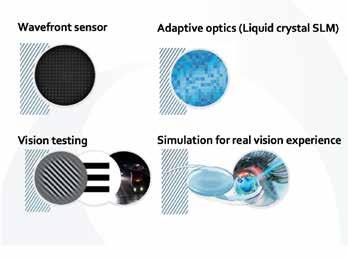
“Neural responses are very important, and that is why we need to do psychophysical measurements,” he said. “For the same retinal image, two different persons can have different tolerance for aberrations.”
In the young person’s eye, Prof Artal noted accommodation involves three separate phenomena: defocus of the crystalline lens, eye convergence, and pupil constriction. In the presbyopic patient, there is a loss of defocus, but convergence and pupil constriction persist as before. A very small pupil can preserve depth of focus through the pinhole effect, although it comes at the expense of a reduction in retinal illumination.
He noted the early years of this century saw a drive among both cataract and refractive surgeons to reduce optical aberrations, either through IOL design or wavefront-guided LASIK.
However, it became clear a certain amount of spherical aberration could increase depth of focus.
“Again, a trade-off, just as with pupil size, if you add a lot of extra aberration, you increase depth of focus, but in the end, your image quality [will] decrease,” he added.
Measuring and quantifying depth of field
Depth of field can be measured both by optical and visual means. Optical means include devices like the HD Analyzer—a machine based on recording double-pass retinal images—and wavefront aberrometry to record changes in the eye’s aberration as the object in view becomes closer. Visual depth of field measurements can be obtained by moving the object in view further or closer to the eye and recording the threshold at which it is no longer in focus. Both approaches can help chart defocus curves. However, the degree of correspondence between the defocus curves obtained in these two ways can vary considerably between individuals.
As a result, it can be difficult to predict the depth of focus a patient will achieve with a multifocal or extended depth of vision IOL or presbyopic LASIK. Prof Artal said this can be overcome by measuring the optical and visual depth of field using a device he helped develop and has patents for—the VAO adaptive optics visual simulator. The device allows the simultaneous measurement of a patient’s optics under different simulated optical conditions with a wavefront sensor while measuring visual depth of focus. Research Prof Artal has conducted shows simulations of identical amounts of spherical aberration resulted in a highly variable visual depth of focus from patient to patient.
“Adaptive optics visual simulators are an ideal way to provide accurate visual and optics depth of field measurements,” he said. “You have to keep in mind that visual through-focus curves show significant individual variability under identical optical conditions.”
Prof Artal presented his findings at an ESCRS eConnect webinar. For more information, see https://escrs.glueup.com/org/escrs/events/.
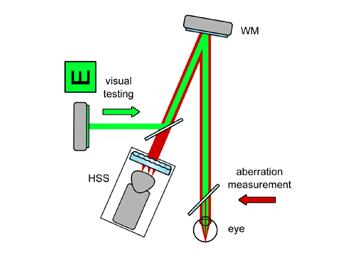
18 EUROTIMES | JULY/AUGUST 2023 CATARACT & REFRACTIVE
Pablo Artal PhD is a professor of optics at the Laboratorio de Óptica, Universidad de Murcia, Murcia, Spain. pablo@um.es
ROIBEÁRD O’HÉINEACHÁIN REPORTS
For the same retinal image, two different persons can have different tolerance for aberrations.
Blended Vision with Enhanced Monofocal IOL

Implanting an enhanced monofocal IOL using a blended vision approach provided good levels of spectacle independence for intermediate and near distances and improved functional performance in daily life, according to a recent study.
“Our study showed patients implanted with the Tecnis Eyhance lens (Johnson & Johnson Vision) experienced improved spectacle independence for intermediate and near vision when comparing patients targeted for blended vision using a mini-monovision to control patients targeted for emmetropia,” Dr Reem Aziz said.
Explaining the rationale for the study, Dr Aziz noted prediction errors could make monovision targets difficult to achieve. And even when outcomes do match refractive targets, adaptation to binocular visual function is not always easy for patients using standard monofocal lens technology.
“The problem is more than 25% of all cataract patients are affected by a prediction error of more than 0.5 D, and more than 7% by a prediction error of more than 1.0 D,” she said. “With this in mind, we wanted to look at the possibility of using an IOL that would achieve a broader landing zone on the defocus curve and give some leeway in the prediction error.”
The Tecnis Eyhance is a non-diffractive monofocal IOL with a modified anterior surface and continuous power profile from the periphery to the centre of the lens, allowing for a wider range of vision without an increase in photic phenomena or a decrease in contrast sensitivity, Dr Aziz explained.
The retrospective multicentre study included 88 eyes of 44 patients who underwent cataract surgery or refractive lens exchange with implantation of the Tecnis Eyhance IOL between August 2020 and December 2022. The procedure aimed for
blended vision in 29 patients with a target of emmetropia in the dominant eye and a target of myopia ranging from -0.5 D to -1.5 D in the non-dominant eye. Key outcomes assessed included three-month postoperative uncorrected visual acuities at distance, intermediate, and near, defocus curves, spectacle independence, and visual function as evaluated by the NEIVFQ questionnaire.
Based on the spectacle independence questionnaire, the frequency of all study participants who were spectacle-free for distance, intermediate, and near activities was 80%, 64%, and 34%, respectively.
“What was interesting was spectacle independence was achieved in 72% for intermediate vision and 38% for near vision in blended vision patients, compared to 47% and 27% for controls, respectively,” Dr Aziz noted. Moreover, the average subjective visual function score for those who completed the NEI-VFQ questionnaire was 74.6% preoperatively and 91.3% three months postoperatively.
“This reflected the fact that patients were very happy overall with the performance of the lens,” she concluded. “Spectacle independence is very important to patients, and those targeted for blended vision did better at intermediate and near distances.”
19 2023 JULY/AUGUST | EUROTIMES
Dr Aziz gave this presentation at the 2023 ESCRS Winter Meeting in Vilamoura, Portugal.
Reem Aziz MD is a post-graduate research fellow at Precision Cornea Centre and an incoming ophthalmology resident at the University of Ottawa, Canada. reem@precisioncornea.com
MCGRATH REPORTS
Study results show greater patient satisfaction with this targeted approach. DERMOT
All-day Near Vision in View
Aceclidine eye drop may provide long-lasting effects for presbyopia patients.
Apresbyopia-correcting eye drop based on the miotic compound aceclidine produced three lines or more of near vision improvement for up to 10 hours in a recent clinical trial, reported Dr Marc Odrich.
He emphasised that these results improve substantially on presbyopia-treating eye drops based on pilocarpine or carbachol.
In a phase 2 clinical trial comparing aceclidine alone and aceclidine plus brimonidine with placebo, 73% and 64% of patients receiving the aceclidine preparations, respectively, saw three or more lines of improvement in near vision with less than five letters of distance vision lost at three hours, and 37% and 48% did so at 10 hours, compared with single-digit gains for the placebo at all checkpoints.
Formulated to extend the effect’s duration, the aceclidine-brimonidine solution performed better than aceclidine alone after nine hours. And once corrected for placebo effect, these efficacy findings are multiples of some drugs already on the market, Dr Odrich noted.
“We’re talking about a strong miotic,” he said. “We have high efficacy all the way out to 10 hours.”
Two phase 3 studies of the aceclidine formulations are underway. They include a range of patients from age 45 to 75 years, refractions ranging from -4.0 D to +1.5 D spherical equivalent, and post-LASIK and pseudophakic patients.
The keys to aceclidine’s effectiveness are its strength and selectivity as a miotic, Dr Odrich explained. Miotics improve near vision by restricting the pupil to create a pinhole effect, with depth of focus increasing rapidly below the Rayleigh limit, which is about 2.0 mm.
“For increased depth of focus, a sub-2.0 mm pupil is essential,” and aceclidine produces one for about 10 hours, he said.
However, many miotics that constrict the iris sphincter also constrict the ciliary muscle, moving the lens anteriorly. This induces a myopic shift of about -1.25 D, which may require distance vision spectacles to correct, Dr Odrich said. Aceclidine is much more selective for the iris sphincter—by a factor of 28:1 compared with approximately 5:1 for carbochol and about 1.5:1 for pilocarpine. As a result, aceclidine induces much less myopia, about -0.13 D.
Optimal presbyopia treatment requires a <2.0 mm pupil
Source: Charman, W Neil. 2019. “Pinholes and Presbyopia: Solution or Sideshow?” Ophthalmic and Physiological Optics 39(1): 1–10. Wiley Online Library. doi.org/10.1111/opo.12594. Near Vision Improvement: Psychophysical visual acuity was tested using an eight orientation, forced-choice paradigm, and maximum contrast Landolt C targets while independently controlling pupil size, defocus levels, and luminance. Pupil was manipulated with eight artificial pupils (1, 1.3, 1.6, 2, 2.5, 3, 4, 6 mm) imaged onto the subjects’ dilated entrance, N=2.
All products except Vuity are investigational. Studies presented were not head-to-head and study designs will vary, see clinicaltrials.gov identifiers below
Data Sources: LENZ INSIGHT (NCT05294328) Phase 2 study results from website as of 1/25/23, Vuity Product Insert from website as of 2/13/23.
20 EUROTIMES | JULY/AUGUST 2023 CATARACT & REFRACTIVE
HOWARD LARKIN REPORTS Internal use Near Vision Improvement L i n e s I mp r o v eme n t Pupil Diameter (mm) Lighting Conditions (cd/m 20 (Dark) 200 (Office) 2000 (Cloudy Day) Average 6 Total Depth-of-Focus (D) Charman & Whitefoot Rayleigh limit Lines Improvement Lighting Conditions (cd/m 20 (Dark) 200 (Office) 2000 (Cloudy Day) Average Rapid DOF Increase Pupil Diameter (mm) Pupil Diameter (mm) Total Depth-of-Focus Near Vision Improvement 2 1.5 1 1 2 3 4 5 6 1 2 3 4 5 6 1 2 3 4 5 0.5 0
“We have identified the ideal pupil diameter and, at the same time, the drug that flexes the right muscle,” Dr Odrich said.



In a separate presentation, Dr Steven J Dell noted presbyopia eye drops currently on the market mostly do not constrict pupils below 2.3 mm and induce myopia. These issues may have contributed to the fall in prescriptions for Vuity (AbbVie)—a pilocarpine solution—which peaked in the US at around 5,800 per week in April 2022 but has since fallen to about 1,600 per week, of which roughly 1,000 are refills.
Dr Dell noted aceclidine does keep the pupil below 2.0 mm, the threshold for improving near vision. “We need stronger, pupil-selective miotics, and these are on the way.”
Dr Odrich presented at the Eyecelerator event at the 2023 ASCRS annual meeting in San Diego, US.
Steven J Dell MD is an ophthalmologist in Austin, Texas, US. He disclosed a relationship with Lenz Therapeutics. steven@dellmd.com

Marc Odrich MD is chief medical officer of Lenz Therapeutics, Del Mar, California, US, and associate professor and director of UVA LASIK at the University of Virginia, Charlottesville, Virginia, US. contact@lenz-tx.com
Fully Assisted Refraction System


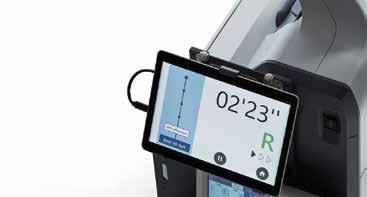
NEW FARS
Great strides with a small controller
The patient proceeds with the subjective refraction by using FARS.*
*The eyecare professional provides the final check/adjustment and eyewear prescription.




21 2023 JULY/AUGUST | EUROTIMES www.nidek.com
Voice guidance Joystick controller
Clinical results confirm the pupil biomarker and effective range <2.0 mm 0 1 2 3 4 5 1hr 0 5hr 2hr 10hr 3hr 4hr 5hr 6hr 7hr 8hr 9hr P u p il s iz e i n m m LNZ100 LNZ101 Vuity® Pupil size over time -1 0 0 10 20 30 40 50 60 70 46% 58% R e s p o n d e r R a t e 33% 25% 23% 65% 54% 67% -1% (No loss of 5 or more letters distance) Placebo Corrected ≥3-Line % Improvement .5 hour 3 hour 10 hour
New EDOF Lens Delivers Good Intermediate Vision
IOL addresses patients’ changing needs.

Anew extended depth of focus (EDOF) intraocular lens provides good biometric predictability and satisfactory visual performance with a low occurrence of visual disturbances after cataract surgery, according to Dr Cristina A Nicula.
“The Evolux IOL (SIFI SpA) is safe, easy to implant, and delivers satisfactory visual performance at a range of distances,” she said. “No visual disturbances were reported by any patient during the entire follow-up period. The design of the lens enables it to provide better intermediate and equivalent distance vision compared to a standard monofocal IOL.”
Discussing the lens properties, Dr Nicula explained that the Evolux is a hydrophobic EDOF IOL with a non-diffractive profile and an optical design based on the optimisation of spherical aberration technology. Its emphasis on improving intermediate vision fits the changing demands of today’s cataract patients.
“Visual needs have evolved in recent decades, with many older adults working beyond retirement age and living a more active life than was previously the case,” she observed. “Choosing an extended monofocal IOL, and improving intermediate vision, means helping these patients with their everyday activities and making their life easier.”
Dr Nicula’s prospective non-randomised study included 30 eyes of 20 patients with a mean age of 72 years who underwent cataract surgery with Evolux implantation between September and December 2022. The main outcome measures were refractive error, corrected and uncorrected distance visual acuity (CDVA, UCDVA), and uncorrected and distance-corrected intermediate visual acuity at 66 cm (UIVA, DCIVA). The team also obtained monocular visual acuity at different vergences (defocus curve). All patients were targeted for emmetropia and evaluated at one and three months postoperatively.
The Evolux demonstrated very good predictability, with all eyes recording a postoper-
ative spherical equivalent within 0.75 D and 90% within 0.5 D of target refraction at one and three months. Both uncorrected and best-corrected distance visual acuity were better than 0.1 logMAR in 100% of eyes. At three months, 87% of eyes recorded a best-corrected distance visual acuity equal to 0.0 logMAR. Uncorrected intermediate distance visual acuity at one month was 0.2 or better in 87%, and best corrected intermediate visual acuity was 0.2 or better in 97% of patients. Additionally, 80% of patients obtained UIVA of 0.2 or better and 100% DCIVA of 0.2 or better. The defocus curves showed all patients gained good intermediate vision ranging from 60 cm to 1 m, and no visual disturbances were reported during the entire follow-up.
Summing up, Dr Nicula reported the Evolux was a safe and effective IOL option for cataract patients who are particularly interested in reducing spectacle dependence at intermediate distances.
22 EUROTIMES | JULY/AUGUST 2023 CATARACT & REFRACTIVE
Dr Nicula gave this presentation at the 2023 ESCRS Winter Meeting in Vilamoura, Portugal.
Cristina A Nicula MD, PhD is an ophthalmologist practising at the Oculens Clinic, Cluj-Napoca, Romania, and an Associate Professor of Ophthalmology at the Iuliu Haţieganu University of Medicine and Pharmacy, Cluj-Napoca, Romania. niculacristina65@yahoo.com
DERMOT MCGRATH REPORTS
AI Could Reduce Refractive Surprises
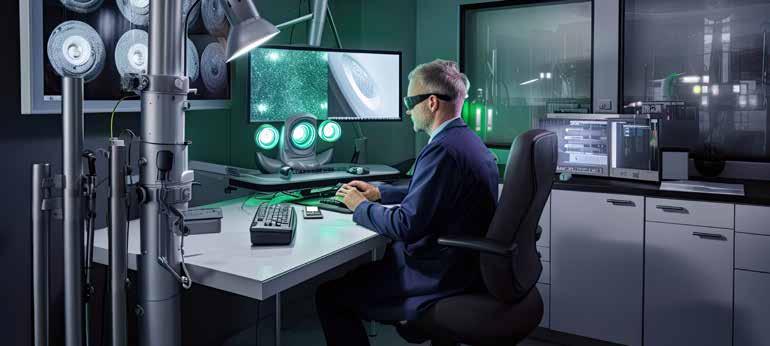
Machine learning and artificial intelligence hold rich potential to help reduce the incidence of refractive surprise after cataract surgery by improving intraocular lens power calculations, according to Dr Lisa Tasch.
“Our study clearly showed that a matrix-based regression and machine learning model are superior to conventional IOL power calculation formulas,” she said. “It may not entirely eliminate refractive surprises, but there is a potential benefit to this approach, especially in short eyes.”
Although improvements in biometry technology allied to customized IOL power formulas use has led to greater refractive accuracy, patients with myopia and hyperopia extremes tend to fare worse, Dr Tasch explained.
She noted the 2019 EUREQUO database of 171,930 cataract extractions reported the average spherical equivalent error was about 0.4 D, with around 74% of cases within 0.5 D of target refraction.
“If we look at another study of more than 8,000 eyes, around 50% of the subset of patients with an axial length of 21.00 mm to 21.99 mm were within 0.5 D of target refraction. This was about 30% for very short eyes (20.00 to 20.99 mm), so there is clearly scope for improvement in these cases,” she said.1
With this in mind, Dr Tasch and co-workers developed a machine learning approach to improve lens power calculation using both partial least squares regression (PLSR) and an AI model using a random forest plot. Data included 760 eyes of 760 patients with different lens models, narrowed down to a final data set of 368 eyes: 205 regular eyes with an axial length between 23.01 mm and 25.49 mm, 139 short eyes and 24 long eyes. The data set included preoperative biometry data from the IOLMaster 700 (Carl Zeiss Meditec), IOL type and power, postoperative biometry data, postoperative subjective refraction, and autorefraction.
50%
If we look at another study of more than 8,000 eyes, around 50% of the subset of patients with an axial length of 21.00 mm to 21.99 mm were within 0.5 D of target refraction.
Predictive parameters in the PLSR model included axial length, white-to-white distance, lens thickness, and anterior chamber depth.
“We used these four significant parameters to train the machine learning algorithm,” Dr Tasch said. “The out-of-bag error development stabilises at about 150 decision trees, which leads us to a mean absolute error of 0.36 D in the out-of-bag sample.”
The PLSR model recorded a lower mean absolute error than the other formulas tested (0.24 D for PLSR, 0.28 D for the AI model, 0.47 D for Haigis, 0.33 D for Barrett, and 0.48 D for Hoffer). About 65% of the patients in the PLSR model had a mean absolute error of 0.25 D compared to about 50% for the Barrett formula.
Putting the results in context, Dr Tasch said the matrix-based regression and machine learning models are superior to conventional IOL power calculation formulas.
“This is really only the beginning. The next steps are collecting more data, which will further improve the accuracy, and implementing a neuronal network that allows constant learning,” she said.
Dr Tasch gave this presentation at the 2023 ESCRS Winter Meeting in Vilamoura, Portugal.
For citation notes, see page 40.
Lisa Tasch MD is an ophthalmologist at Johannes Kepler University, Linz, Austria. lisa.tasch@kepleruniklinikum.at
23 2023 JULY/AUGUST | EUROTIMES
learning for improved IOL power calculation.
Machine
DERMOT MCGRATH REPORTS
Exploring IOL Options for Yamane Scleral Fixation
Implantation of LAL deemed feasible based on bench tests.
 CHERYL GUTTMAN KRADER REPORTS
CHERYL GUTTMAN KRADER REPORTS
Findings from a bench study investigating haptic tensile strength support the suitability of the Light Adjustable Lens (LAL) for Yamane scleral fixation.
“After our experiment, I performed my first case of Yamane scleral fixation with a LAL and can report a slight increase in difficulty handling the silicone material,” said Dr Wyche T Coleman III. “However, the result was excellent overall, with great IOL position at two weeks postoperatively. We are looking forward to reporting results after refractive adjustment in these cases.”
Dr Coleman told EuroTimes that interest in using the LAL for the Yamane technique is multifactorial.
“We were prompted to look for new options for Yamane fixation because of cases of ‘rotisserie rotation’ (rotation on one of the haptic-optic junctions) with the CT Lucia, which was our IOL of choice. It would be a bonus to find a lens with better stability and the chance of improving refractive outcomes with a non-invasive technique,” he said.
“In our practice, we have seen patients with a subluxated toric or multifocal IOL who had been glasses-independent prior to the dislocation. Although we performed LASIK for refractive correction post-scleral fixation in a few such patients, we consider that approach less than ideal for an eye that has already been through so much surgery.”
The bench study conducted by Dr Coleman and colleagues evaluated the LAL and two other three-piece IOLs—CT Lucia 602 (Zeiss) and AcrySof MA60AC (Alcon). Each IOL was held with stable haptic orientation using a custom device, and an attached tensiometer exerted force on one haptic. The recorded endpoint was maximum haptic tensile strength, defined as the force at which the optic stopped maintaining tension or broke.
The experiment used ten 24-D lenses for each IOL model. The results showed mean maximum haptic tensile strength was significantly greater for the CT Lucia 602 compared to the MA60AC and LAL (156 versus 103 and 84 g, respectively). Imaging for characterising the IOL fracture mechanism revealed 40% of the MA60AC IOLs had a fractured haptic versus none of the CT Lucia or LAL lenses. Optic fracture occurred only with the LAL (40%). The haptics were pulled out of the optic without any damage in 100% of the CT Lucia IOLs, 60% of the LALs, and 60% of the MA60AC IOLs.
“Although the LAL haptics separated at the lowest tensile force, approximately half that of the CT Lucia, the mechanism of separation with the LAL commonly involved a piece of the optic being torn off with the haptic. We believe this is most conducive to long-term stability of a Yamane-fixated lens,” said Dr Coleman.
“Our finding of haptics completely dislodging from the MA60AC optic is consistent with clinical experience. We believe this separation mechanism makes the MA60AC undesirable for the purpose of Yamane scleral fixation because it increases the likelihood of optic-haptic separation from stress caused by eye movement over time.”
The team plans to repeat their experiment with the threepiece Tecnis ZA9003 lens, as some surgeons use it to perform Yamane scleral fixation.
24 EUROTIMES | JULY/AUGUST 2023 CATARACT & REFRACTIVE
Dr Coleman presented his study at ARVO 2023 in New Orleans, Louisiana, US.
Wyche T Coleman III MD is an ophthalmologist in the Willis-Knighton Health System, Shreveport, Louisiana, US. wychetcoleman@gmail.com
Multifocal Phakic IOL an Alternative Approach?
Interim results from an ongoing international multicentre trial indicate that the ArtiPlus phakic multifocal IOL (Ophtec) offers good efficacy and safety as well as high rates of spectacle independence for the correction of presbyopia in the myopic population, according to Dr José L Güell.
“The results are promising and, if confirmed with larger cohorts and longer follow-up, should give us a viable alternative to existing strategies for presbyopia in myopes with the advantages of reversibility and anatomical preservation,” he said.

The surgical approaches currently available all have some limitations, he pointed out.
The second group is primary spherical or toric phakic IOL implantation in presbyopic myopes targeting some degree of monovision.
“This is a relatively standard approach in my practice and works well,” he said.
“There are two main approaches: those touching the cornea with the laser trying to achieve some degree of multifocality or monovision and those doing crystalline lens surgery using different kinds of IOLs,” Dr Güell explained. “Most, if not all, of these procedures consist of irreversible surgical procedures. If we perform corneal laser surgery in this age group of presbyopic myopes, it may induce some limitations in the future selection of the ideal IOL at the time of cataract surgery.”
Published data has also demonstrated crystalline lens surgery in presbyopic myopes, though effective, is associated with a higher risk of retinal detachment and a complete loss of the residual accommodation.
“For these reasons, phakic IOLs are an alternative option,” he said. “The Artisan, Artiflex, and implantable collamer lens (ICL, Staar Surgical) have all demonstrated very good efficacy, predictability, and safety ratios in properly selected young myopes. And they have the attractive feature of reversibility.”
Dr Güell identified three main types of patient profiles adapted for presbyopic correction with phakic implants.
The first type is patients who had phakic IOL implantation in the past and have some residual myopia. If they have reached presbyopic age, they might use glasses only for night driving or specific tasks.
“If the biometric, IOP, and endothelial cell count parameters are okay, they are usually quite comfortable keeping the phakic IOL in place and using correction only in particular circumstances, such as night driving,” he said.
The third group is primary phakic IOL implantation with the ArtiPlus iris-claw phakic lens that incorporates the multifocal optic technology of the Precizon IOL into the Artiflex platform.
“The Artiflex platform has proven safety and efficacy for more than 20 years, so we are familiar with the optic behaviour,” he said. “The Precizion multifocal optic has also proven its efficiency during the last 10 years.”
A prospective single-arm multicentre study of the ArtiPlus is currently in eight centres in three countries. Dr Güell presented his interim data of 30 patients with a mean age of 51 years. Complications provided by the clinical trial interim analysis showed a very good safety profile, apart from one case of optic neuritis, which was not classified as device-related.
“The subjective feedback so far from patients to surgeons is very positive,” he said. “The quality of vision shows dysphotopsia occurrence is relatively low with this lens.”
Dr Güell concluded that while the ArtiPlus data so far was very promising, only long-term prospective evaluation will clarify the comparative efficacy-safety ratios of phakic IOLs with other surgical strategies for presbyopia.
25 2023 JULY/AUGUST | EUROTIMES
Dr Güell presented these findings at the 2023 ESCRS Winter Meeting in Vilamoura, Portugal.
José L Güell MD, PhD is Associate Professor of Ophthalmology at the Autonoma University, Barcelona, Spain. güell@imo.es; jose.guell@imo.es
Early results with the ArtiPlus IOL report promise for presbyopia treatment.
DERMOT MCGRATH REPORTS
The subjective feedback so far from patients to surgeons is very positive.
Amniotic Membrane Transplantation for Ocular Surface Disease
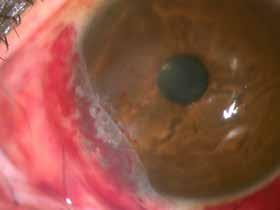
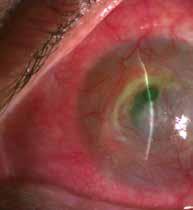
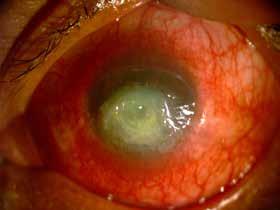
Study demonstrates differences among surgical indications.
CHERYL GUTTMAN KRADER REPORTS
Amniotic membrane transplantation (AMT) is useful for treating ocular surface diseases (OSDs), a large retrospective review confirms.

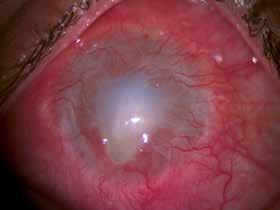
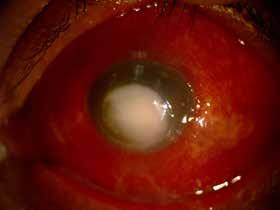
“Our research highlights AMT as a safe and effective procedure for managing many conjunctival and corneal pathologies, but also that desired results were achieved in lower percentages of eyes with ocular burns, ocular surface reconstruction, and limbal stem cell deficiency (LSCD),” said Dr Naomi C Zatarain Barrón.
“Further research is needed to determine why the results were poorer when AMT was used for the latter applications. We hope the findings might help guide decisions about when we should consider alternate strategies or continue to use AMT because it is safe and the best intervention currently available.”
The study included 246 eyes of 215 patients who underwent AMT for OSD between January 2017 and October 2022. The patients had a mean age of 48 years, and mean available
follow-up was almost 11 months. Pterygium was the leading indication for AMT (37.8%), followed by perforation (15.0%), burns (12.2%), neoplasms (11.4%), ocular surface reconstruction (10.2%), epithelial defect/ulcer (8.1%), and LSCD (5.3%).
Cryopreserved amniotic membrane was used for the procedure, which proceeded without any complications in all but two cases. Postoperative complications occurred in 110 eyes (44.7%), with pterygium recurrence the most common (20.0%). Other postoperative complications were symblepharon (18.2%) and epithelial defect (11.8%). Analysed IOP data showed no significant difference between the preoperative and postoperative levels.
“We did not have a reason to suspect a shift in IOP after AMT, but we analysed this endpoint to be comprehensive in our evaluation of safety,” Dr Zatarain said.
Overall, AMT was associated with a statistically significant improvement in BCVA and UCVA: BCVA improved from 1.16
CORNEA 26 EUROTIMES | JULY/AUGUST 2023
logMAR preoperatively to 0.94 logMAR postoperatively, and UCVA improved from 1.33 preoperatively to 1.14 logMAR postoperatively.


























































The desired postoperative result—defined with criteria that varied depending on the indication—was achieved in 100% of eyes that underwent AMT for management of neoplasm, in 80% with an epithelial defect/ulcer, 76.3% with pterygium, and 73.0% with a perforation. However, only 60.0% of eyes with an ocular burn, 52.0% of those requiring ocular surface reconstruction, and 38.5% of those with LSCD achieved the desired result after AMT.



For a better understanding of the lower success rates using AMT in eyes with ocular burns, LSCD, or those needing ocular surface reconstruction, Dr Zatarain and colleagues plan to conduct additional analyses looking for specific factors that might predict a positive outcome.




“We would like to conduct subgroup analyses,” she told EuroTimes. “For example, for our patients with LSCD, we will stratify them based on the underlying cause for the LSCD to see if the aetiology was a prognostic factor.”



27 2023 JULY/AUGUST | EUROTIMES
Dr Zatarain presented this study at ARVO 2023 in New Orleans, Louisiana, US.
Naomi Carolina Zatarain Barrón MD is an ophthalmology resident at Instituto de Oftalmología Fundación Conde de Valenciana IAP, Mexico City, Mexico. naomiztnb@gmail.com
Pre- and postoperative photographs of different OSD that underwent AMT.
Turning Point for Glaucoma

Current glaucoma treatment models rely heavily on topical medications, generally watching and waiting for progression before interventions such as selective laser trabeculoplasty (SLT) or minimally invasive glaucoma surgery (MIGS). But effective as topical medications can be, they present significant challenges, according to Dr Iqbal “Ike” Ahmed.
Topical medications’ efficacy depends on patient adherence, which is notoriously poor, and they deliver suboptimal 24-hour intraocular pressure (IOP) control. Eye drops may even be linked to histological changes that could irreversibly damage the conjunctiva, Tenon’s capsule, and, possibly, the trabecular meshwork—potentially limiting future treatment options and promoting glaucoma progression, he noted.
Moreover, adding medications typically results in decreasing returns on IOP lowering in exchange for greater adverse effects and further reduced patient quality of life. Given these drawbacks, “it’s time we redefined what [maximum tolerated medical therapy] really means,” Dr Ahmed said.
New and emerging interventional technologies make it increasingly possible to take glaucoma treatment out of patients’ hands, leading to better 24/7 IOP control and improved quality of life for patients with mild to moderate disease. Better use could be made of these technologies by adopting an interventional approach to glaucoma therapy for first-line and stepwise treatment, Dr Ahmed argued.
The interventional option
“Glaucoma therapy is really changing and evolving,” he said. While devices currently account for only about 3% of the global glaucoma treatment market, evidence is building for SLT as first-line therapy, and earlier use of standalone MIGS. Combination phacoemulsification and MIGS is fairly well established, and microinvasive bleb surgery is gaining ground. On the near horizon are extended-release drug delivery technologies and non-incisional MIGS.
Generally, early intervention is better, as it delays progression and the need for later interventions after damage is done.
However, Dr Ahmed emphasised choosing the right patient for the right procedure at the right time is critical.
“For me, interventional glaucoma very often addresses that earlier patient who doesn’t need to have aggressive surgery but isn’t best served by medical therapy,” he said. “Glaucoma is only young once. Eventually, glaucoma gets old, and it gets harder to treat.”
What it means
Dr Ahmed described interventional glaucoma as a proactive approach, advising practitioners to consider interventions before disease progression and avoid stacking medications.
Early, predictive diagnostics may help identify when and how to best intervene. Risk factor analysis, ocular biomechanics, genetic testing, digital health records, and artificial intelligence may all support decision-making.
Active, advanced monitoring will help better monitor patients, Dr Ahmed said. Technologies include robust structure and function progression analytics, home monitoring, IOP sensors, and detecting apoptosing retinal cells.
Already, he sees progress towards interventional glaucoma.
“The waiting and watching approach is—I think, I hope— changing, evolving into a more interventional approach,” avoiding a more reactive approach and the progression it may allow, Dr Ahmed said. “We are lucky to have technologies here and coming that allow us to use intervention.”
Dr Ahmed delivered his remarks during the Stephen A Obstbaum MD Honoured Lecture during Glaucoma Day at ASCRS 2023.
Iqbal K “Ike” Ahmed MD is professor at the John A Moran Eye Center of the University of Utah, US. He is also an assistant professor at the University of Toronto, Canada, division head of ophthalmology at Trillium Health Partners, Toronto, Canada, and chief innovation officer at Prism Eye Institute, Toronto, Canada. ike.ahmed@utoronto.ca; ikeahmed@mac.com
28 EUROTIMES | JULY/AUGUST 2023
Is glaucoma ready for an interventional treatment approach?
GLAUCOMA
HOWARD LARKIN REPORTS
To be the leading community and trusted source for science, education, and professional development in the fields of cataract and refractive surgery.
Learn more at ESCRS.org

Every Dioptre Counts to Control Myopia Epidemic

If current trends continue, one out of every two people will be myopic by 2050. Even more worryingly, a significant proportion of those will be highly myopic with all the associated problems such as ocular morbidity, disease, and vision loss, according to Professor Serge Resnikoff.
“At the beginning of the century, about 20% of the global population was myopic. That figure is currently around 30% to 35% and is expected to reach 50% by the middle of the century,” he said. “And this is something happening not only in Asia, where a lot of the media attention has focused, but in every other region, including Latin America and Africa. It is all going in the same direction.”
High myopia is expected to increase even faster, from about 2% in 2000 to 10% by 2050.
“Generally, the reason high myopia is increasing or growing faster than myopia is probably because the age of onset is earlier,” he said. “What we typically classify as ‘school myopia’ is now becoming ‘preschool myopia’, with education pressure happening earlier in the life of children, especially in some parts of the world or some communities.”
Prof Resnikoff further explained gene-environment interaction primarily determines myopia.
“While the genome is part of the equation, the environment plays a more important role,” he said. “This is why we have variations in prevalence of myopia within countries and comparing rural versus urban areas. There is basically a fourfold
difference when factors such as exposure to light, education level, and time spent outdoors are taken into account.”
This global upsurge in myopia, he added, carries two main implications.
“[An estimated] 150 million people are myopic but are not properly corrected—whether with glasses, contact lenses, or refractive surgery,” Prof Resnikoff noted. “The figures are worse, of course, where income is lower, but even in upper middle-income countries, around 30% or 40% of the population do not have the appropriate correction for their myopia.”
The second implication is myopia, particularly high myopia, is a risk factor for ocular morbidity, disease, and permanent vision loss.
“High myopia is a key risk factor for conditions such as myopic macular degeneration, staphyloma, cataract, and glaucoma. This is why myopia is already a leading cause of irreversible vision loss in places like China and Japan, where more people are blind because of myopic macular degeneration than by age-related macular degeneration.”
Even a 1.0 D increase in myopia is associated with a significant increase in the prevalence of myopic maculopathy, he added.
“This is why, as Mark Bullimore has said, every dioptre counts. It is absolutely critical to do something to delay the onset and control myopia,” Prof Resnikoff emphasised. “This is a concern for our entire profession when we consider the huge number of people that will need treatment and also for society at large because the global productivity loss is in the order of $250 billion because of uncorrected myopia or complications of myopia.”
30 EUROTIMES | JULY/AUGUST 2023
Prof Resnikoff gave this presentation at the 2023 ESCRS Winter Meeting in Vilamoura, Portugal.
Serge Resnikoff MD, PhD is a conjoint professor at the University of New South Wales in Sydney, Australia, and serves as Chair for the International Myopia Institute. serge.resnikoff@gmail.com
Significant societal problems possible if worldwide myopia trends continue.
PAEDIATRIC OPHTHALMOLOGY
DERMOT MCGRATH REPORTS
High myopia is expected to increase even faster, from about 2% in 2000 to 10% by 2050.

Educational Resources Advanced FEBOS-CR Exam/Diploma (Cataract and Refractive Surgery) ESCRS iLearn • ESCRS Research Portals • Important Publications ESCRS EuroTimes Podcasts • ESCRS on Demand • JCRS Online Case Reports The Video Journal of Cataract, Refractive, and Glaucoma Surgery escrs.org/education/educational-resources
OPHTHALMOLOGY IS CHANGING FAST. NEW SKILLS CAN HELP YOU THRIVE.
Technological, economic, and patient access pressures are transforming ophthalmic practice. In Europe—and especially the UK—ophthalmology services formerly provided primarily in public hospitals are shifting to high-volume private hubs, with cataract surgery leading the way, said Dr Paul Rosen.
The resulting economic, referral, and practice disruptions already challenge not just patient care but surgeon training, research, and employment. If anything, the trend will accelerate, said Dr Rosen, chairperson of the ESCRS Leadership and Business Innovation (LBI) Committee.
“Things will be different in the next 20 to 30 years,” he told EuroTimes. Services that could soon exit the hospital setting, along with its support for access and training, include treating macular degeneration and glaucoma management. “You may find things go full circle, so [today’s high-volume hubs] become the eye hospitals of the future.”
And that’s just the beginning. Telehealth and artificial intelligence will profoundly affect every aspect of ophthalmic practice, from patient selection and counselling to diagnostics and treatment selection to follow-up and patient monitoring, reducing the need for in-clinic visits. Robotics may well transform surgery itself for younger surgeons, Dr Rosen noted.
“Ophthalmologists in the future may be more involved in business


development and managing technicians rather than delivering services on the ground,” he predicted. Skill sets—including economic modelling, IT coding, engineering, and especially leadership and innovation—will be key to thriving.
“You not only have to excel in the clinical aspects of your work, but you have to be able to collaborate with the management in the organisation in which you are working,” said Dr Rosen, who took an MBA from the London Business School.
Yet these skills are not generally part of medical school or surgeon training. Helping ophthalmologists develop them is the goal of the ESCRS LBI programme at the 2023 ESCRS Congress in Vienna and the LBI weekend in Frankfurt, Germany (7–8 October).
Who owns ophthalmology?
Beyond enabling more and better patient care delivery in outpatient and office settings, the growing cost and income potential of technology-enabled ophthalmic practice drives investment from hospitals, surgeon partnerships, and private equity finance alike. Recognising the importance of this trend—and its profound implications for control of ophthalmology resources and patient care—an LBI event, “Who Owns Ophthalmology?” will feature for the first time at the ESCRS Main Symposium on Friday, 8 September, 17:00–19:00.
Dr Rosen, who will co-chair the symposium with Dr Michael Amon (Vienna, Austria), will explain private equity, how such investment affects clinical practice and training, how to value a practice, and alternative company structures.
LBI masterclass
All clinicians must learn to be master jugglers. No matter the clinical practice setting, they must master myriad skills, extending beyond training received in medical school, residency, and fellowships. In this interactive, day-long programme, ESCRS Consultant Kristine Morrill and a European panel will cover topics including “Finding the Hidden CEO,” “Managing Money,” “Ophthalmologists as Inventors,” and “Encouraging Creativity.”
“The panel members are in ophthalmology practice today, living it in the trenches, not just pontificating from on high. It will be an open exchange of ideas, not just lectures,” Morrill told EuroTimes. The masterclass is Sunday, 10 September, 08:30–17:30.
LBI workshops
These workshops will feature eight one-hour presentations covering a wide range of topics, including “Business
32 EUROTIMES | JULY/AUGUST 2023 LEADERSHIP AND BUSINESS INNOVATION
Ophthalmologists in the future may be more involved in business development and managing technicians rather than delivering services on the ground.
Skills for Young Ophthalmologists,” “Mastering the Art of Negotiation,” “Building and Developing Your Private Practice,” “Value-Based Healthcare,” “The Cost and Savings of Sustainability in Ophthalmology,” “Getting an Ophthalmological Business Back on Its Feet During Wartime,” and “Managing Patient Flow in a Busy Ophthalmological Practice.” The workshops will run Monday, 11 September, 09:00–18:00.
LBI weekend, Frankfurt, 7–8
October 2023
The weekend is an intensive two-day course featuring “Principles of Leadership and Innovation for Ophthalmologists” and “Practical Tools for Ophthalmologists in Planning and Managing Financial Resources and Creating Value” on Saturday, 7 October and Sunday, 8 October. In addition to presentations from key speakers, the programme will feature practical exercises—both individual and group—on developing leadership, innovation, and financial management skills.
LBI
webinar, “Who Owns Ophthalmology?,”
November 2023
This hour-long webinar will follow up on some of the key learnings from the Main Symposium held in Vienna and the LBI weekend in Frankfurt, continuing the educational programme.
Future initiatives
Additional programming, including a formal course on LBI and a young ophthalmologist mentorship programme, is in development.


Dr Rosen attributed the success of the LBI programme to its committee members: Dr Artemis Matsou (Greece), Dr Arthur Cummings (Ireland), Dr Sheraz Daya (UK), Dr Daniel Kook (Germany), Dr Guy Sallet (Belgium), Dr Pavel Stodulka (Czech Republic), and Dr Vincent Qin (Belgium).
Paul Rosen BSc, MB ChB, FRCS, FRCOphth, MBA is Consultant Ophthalmic Surgeon at the Oxford Eye Hospital, Oxford University Hospital Foundation Trust, UK, and was Head of Department from 1998 to 2004, and Clinical Director of the Specialist Surgery group from 2010 to 2016. phrosen@rocketmail.com
33 2023 JULY/AUGUST | EUROTIMES
more about membership at escrs.org
up as an ESCRS member now for €150 per year and save €100 on your 2023 Annual Congress registration fee!
JOIN the leading community and trusted source for SCIENCE, EDUCATION, AND PROFESSIONAL DEVELOPMENT in the fields of cataract and refractive surgery.
Learn
Sign
PREPARING FOR VIENNA
The Winter Meeting in Vilamoura had 81 sessions and 400 presentations, along with posters, courses, wet labs, and more. How do you put together such a programme? What does the Programme Committee do, and how do they do it?
The ESCRS Programme Committee is large, with 18 experienced surgeons. We usually start planning the main symposia about a year and a half before a congress or meeting. In fact, we have just now decided on the topics for the 2024 Congress. First, we look at all the main symposia we have done in the past five or ten years and brainstorm to develop the next main symposia, which are the skeleton of the Congress and our Winter Meeting. Then we start to lay out the other parts of the programme. The Education Committee, with 19 members, is also involved—they take care of the courses.
It is not only a painful process but a very long process. It takes many, many months with a lot of work from a lot of people. For the upcoming Vienna Congress, we got more than 270 applications for instructional courses, but we only have space for 110. There were a lot of good courses we couldn’t fit. Then we looked at the papers and the posters, for which we received more than 1,900 abstract submissions. All the abstracts get reviewed and graded by several reviewers. It is a very transparent process. I can’t tell you how much work that is to get all that sorted. Then we sort out the wet labs and start looking for instructors. We keep track of everything on a huge spreadsheet.
That must be an amazing spreadsheet. It is. It has a lot of information. For example, we can tell if a course has been given already, how many attended, and how attendees rated it. Then taking care of schedule clashes is even more complex. You have all these accepted papers, posters, symposia, and videos on top of that.
Now you’ve also added the iNovation session. The iNovation Day takes place on Friday. The idea is industry and start-up companies gather with surgeons to discuss trends and new ideas. We look at many different aspects of ophthalmology and medicine. The first one was at the Milan Congress last year. It was a great success, with many companies and sponsors and had great networking opportunities.
How has planning the conference programme changed over the years?
From our perspective, the pandemic and COVID told us we need in-person, face-to-face contact, no question. We are tired of just having virtual congresses. We did that once—out of necessity. Now we’re trying to introduce more interactivity. People come to a congress to learn, but also to see people and talk with colleagues. The things that happen outside the conference rooms are often the most important. You meet colleagues you haven’t seen in a while, get the real story.
We would like fewer of the “presenter on the podium” type of sessions, with the audience just sitting there. For example, we will have the arena, a central boxing ring stage, with pro and con presentations, which is very

different from the usual setup. It will have a moderator and short presentations followed by discussion. Audience members will be able to write comments that will appear on a big screen and discussed straightaway, allowing for an exchange of ideas.
You will see many changes in the format of our Congress. For example, we’ve changed the free paper sessions. We used to have one room per session. It was frustrating at times because maybe there were only two or three presentations that you were really interested in, and you would have to change to another room to see another session. It was quite cumbersome. Now we have four free paper sessions, all in one very large room. Attendees will have headphones with four channels to easily go from one session to another.
Finally, we’ll have something quite special in Vienna, which most people have not experienced—a Viennese ball. This will be in the Hofburg Imperial Palace Saturday night. All are welcome. Men can wear white or black tie, a dark suit, or elegant national costume. Ladies wear full-length ball gowns. This is a once-in-a-lifetime opportunity for people coming to Vienna. Dancing is optional, but we will have a crash course on waltzing on Friday night in the Messe Wien.
34 EUROTIMES | JULY/AUGUST 2023 NEWSMAKER
ESCRS President Oliver Findl gives EuroTimes a look behind the scenes on planning the Vienna Congress.

35 2023 JULY/AUGUST | EUROTIMES YOUNG OPHTHALMOLOGISTS ESCRS https://escrs.org/special-interest-groups/yos/
New Drug-eluting Glaucoma
Implant from Glaukos
The US FDA has accepted the new drug application (NDA) for the iDose TR™ (travoprost intraocular implant) from Glaukos for glaucoma and ocular hypertension treatment. Glaukos has set a Prescription Drug User Fee Act (PDUFA) target action date of 22 December. The iDose TR is a microinvasive intraocular implant placed in the anterior chamber, anchored to the sclera just behind the trabecular meshwork. It is designed to release travoprost for at least a year and can be removed and replaced, offering an alternative to daily eye drop treatment for glaucoma.

www.glaukos.com
Zeiss Monofocal IOL Approved
The FDA has approved Zeiss’ CT Lucia 621P monofocal intraocular lens, an aspheric, single-piece C-loop lens based on a patented Zeiss Optic Asphericity Concept—designed to compensate for a wide range of spherical aberrations and, at the same time, optimise visual outcomes in the event of lens decentration and misalignments. The CT Lucia 621P is composed of a new glistening-free hydrophobic material and comes in a fully preloaded injector.
www.zeiss.com
New Laser Coagulator from Norlase
Denmark’s Norlase has received US FDA 510(k) clearance and European CE marking for its Echo Green Pattern Laser photocoagulator. Using Micro-electromechanical systems (MEMS) technology, the Echo system attaches to compatible slit lamps and provides a laser and scanner integrated into a single delivery device. The laser features a full pattern palette, including grids, circles, triple arcs, and a microsecond mode for tissue-sparing treatment. The scanning laser also includes a wireless user interface, no external fibre, and voice control of patterns and parameters.
www.norlase.com
J&J Femto Laser Gains Approval
Johnson & Johnson Vision recently announced its new Elita™ femtosecond laser received US FDA 510(k) clearance for LASIK flap creation. The company unveiled the 2023 laser at the ASCRS annual meeting in San Diego, US. The new laser features a low energy per pulse, an ultra-fast laser repetition rate, and a small 1 µm spot size.
www.jjvision.com
B + L Releases New OVDs
Bausch + Lomb announced the US launch of its StableVisc™ cohesive ophthalmic viscosurgical device (OVD) and TotalVisc™ Viscoelastic System, offering dual-action protection during cataract surgery. StableVisc is a cohesive OVD designed to help maintain space in the anterior chamber. It contains sodium hyaluronate and sorbitol, which has free-radical scavenging capabilities. TotalVisc Viscoelastic System includes StableVisc and ClearVisc™, a dispersive OVD approved in 2021, providing dual-action mechanical and chemical protection.
www.bausch.com
36 EUROTIMES | JULY/AUGUST 2023 INDUSTRY NEWS
NEWS IN BRIEF
GENDER DISPARITY IN OPHTHALMOLOGY REMAINS A CHALLENGE


Progress has been made in reducing the gender disparity in cataract and refractive surgery, with an increasing number of women taking on leadership roles in the ASCRS and ESCRS. However, it may take many years for incoming trainees to truly shift the balance as women climb the career ladder, says Professor Liliana Werner. The gender disparity does not result from fewer women entering ophthalmic training but may relate to a drop-out phenomenon, she suggests. The Association of American Medical Colleges reported that women accounted for 45.8% of residents and fellows in 2019 but accounted for only 36.3% of active physicians in 2020. Similarly, a recent ESCRS clinical trends survey showed female respondents outnumbered male respondents among those in training or with less than 10 years of experience, but male respondents outnumbered female respondents among those with 11 or more years of experience. Systemic variables may play a role in creating gender disparities in ophthalmology. For example, women remain in the minority among programme directors (23.9%) but are more common in departments with female chairpersons. However, a 2018 review of 111 academic ophthalmology department chairpersons showed 90% were male. Having more women available as mentors and role models in surgical specialties will likely continue to help close gender gaps, Prof Werner adds. L Werner et al., “Gender disparities in cataract and refractive surgery”, 49(5): 449–450.
FEMALE AUTHORS UNDERREPRESENTED
A study reviewing trends in female authorship in cataract and refractive surgery journal articles shows female ophthalmologists are less likely than male ophthalmologists to be first or senior authors. However, female authorship trends vary between countries, and the COVID pandemic appeared to modify the types of articles by female authors. The study reviewed articles published in the JRS and JCRS from January 2015 to February 2022. The analysis included 3,153 articles, among which 910 works had female first authors and 648 had female senior authors. Women made up less than 30% of authorship of all types of literature, except for prospective/observational studies, in which 31.3% had female first authors. The United Kingdom and Germany were negatively associated with female first authors and senior authors, whereas India and China were positively associated; There were no significant associations in America. From 2020 onward, the percentage of retrospective analysis and letters/editorials by female first authors significantly increased but significantly decreased in case reports and “others” by female first authors. Similar associations were observed for female senior authors.
H Choudhry, “Female authorship trends and the effect of COVID-19 on cataract and refractive surgery literature”, 49(5): 531–537.
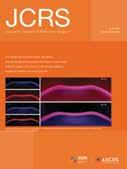
Research Education Innovation
37 2023 JULY/AUGUST | EUROTIMES JCRS HIGHLIGHTS
ESCRS’s vision is to educate and help our peers excel in our field. Together, we are driving the field of ophthalmology forward.
ESCRS Leadership, Business & Innovation
ESCRS LEADERSHIP & BUSINESS INNOVATION MASTERCLASS,
SUNDAY, 10 SEPTEMBER. STRAUSS 3, 08.30–18.00
The Fine Art of Juggling
Ophthalmologists must be master jugglers. Most of these skills are learned on the job with no formal training. The expectation is they will manage them all and do them well. In this interactive and didactic workshop, ESCRS Consultant Kristine Morrill and an expert panel will cover topics including Finding the Hidden CEO, Managing Money, and Encouraging Creativity.
08.30–08.40 Welcome
Paul Rosen, Chair ESCRS Leadership and Business Innovation Committee, Consultant Ophthalmic Surgeon, Oxford Eye Hospital, Oxford University Hospital Foundation Trust, UK; and





Kristine Morrill, ESCRS Consultant and Founder and President, Medevise.
08.40–10.00 The Hidden CEO
Omid Kermani, Co-Founder Augenklinik am Neumarkt, Germany; and

Daniel Kook, Co-founder, Prof Kook & Partner, Germany.
10.00–10.30 Discussion/coffee break
10.30–11.30 Money Management—Balancing Profitability with Patient Care

13.30–14.30
Panel: Ophthalmologist as Inventor— Taking Something from Idea to Reality
Florent Constantini, Founder, GlassPop, France.

Nick Pennington, Associate Medical Director, Ufonia, UK.

Robert McClaren, UK, Ophthalmologist and Founder, Nightstar/Biogen.

14.30–14.45 Discussion
14.45–15.30 Understanding the EU Regulatory Environment
Michael Mrochen, Founder and CEO, IROC Science, Switzerland.

15.30–16.00 Discussion/coffee break
16.00–17.00
Panel: Embracing Your Creative Side
11.30–11.45 Discussion
11.45–12.45 HR: Mistakes We’ve Made and How We Learned from Them
Paul Rosen and Kris Morrill
12.45–13.30 Lunch Break
Damien Gatinel, Chief, Anterior Segment, France.
Detlef Holland, Co-Founder, Augenzentrum One, Germany.
Florian Auerbach, Founder, Private Practice, Germany.
17.00–17.30: Discussion/Wrap Up Faculty, Paul Rosen, and Kris Morrill
FACULTY
ESCRS LEADERSHIP & BUSINESS INNOVATION WORKSHOPS





MONDAY, 11 SEPTEMBER. STRAUSS 3, 09.00–17.00


CHAIRMAN
PAUL ROSEN, UK
• BUSINESS SKILLS FOR YOUNG OPHTHALMOLOGISTS


• MASTERING THE ART OF NEGOTIATION
MODERATORS: ROD SOLAR, UK
• BUILDING AND DEVELOPING YOUR PRIVATE PRACTICE







• VALUE-BASED HEALTHCARE
• SUSTAINABILITY IN OPHTHALMOLOGY
LAURA LIVESEY, UK

• GETTING AN OPHTHALMOLOGICAL BUSINESS BACK ON ITS FEET DURING WARTIME
• MANAGING PATIENT FLOW IN A BUSY OPHTHALMOLOGICAL PRACTICE
• MARKET LEADERSHIP: HOW THREE REFRACTIVE SURGEONS 3X’ED THEIR PRACTICES IN THE LAST THREE YEARS
 A Matsou, Greece
D Kook, Germany
D Chang, US
N Reus, The Netherlands
B Lahood, Australia
O Findl, Austria
V Qin, Belgium
P Stodulka, Czech Republic
R van Leeuwen, The Netherlands
J Buratto, Italy
R Nuijts, The Netherlands
F van den Biggelaar, The Netherlands
C Reibel, France
A Matsou, Greece
D Kook, Germany
D Chang, US
N Reus, The Netherlands
B Lahood, Australia
O Findl, Austria
V Qin, Belgium
P Stodulka, Czech Republic
R van Leeuwen, The Netherlands
J Buratto, Italy
R Nuijts, The Netherlands
F van den Biggelaar, The Netherlands
C Reibel, France
Cited in this Issue
LASIK for Ageing Eyes
Page 16
1. A Villanueva et al., “Long-term corneal multifocal stability following a PresbyLasik technique analysed by a light propagation algorithm,” Clin Exp Optom. 2019; 102: 496–500.

AI Could Reduce Refractive Surprises
Page 23
1. Aristodemou et al., J Cataract Refract Surg. 2011 Jan; 37: 63–71.
ESCRS Academies
Committee representatives of ESCRS organise and present sessions at meetings organised by our national and sister societies. These sessions are typically delivered by a group of speakers on a current topic selected by ESCRS in person or virtually.
These sessions provide useful education as well as collaboration between societies promoting and sharing benefits across both memberships.
escrs.org/education/academies/
40 EUROTIMES CITATION INDEX
Upcoming Events
September 8–12
2023 ESCRS Annual Congress
Vienna, Austria

Sept 8
October 5–8
2023 EURETINA Congress
Amsterdam, Netherlands

Oct 28–Nov 1
German Society of Ophthalmology
Berlin, Germany

November 3–6
American Academy of Ophthalmology
San Francisco, United States
Oct 5 Nov

2023 JULY/AUGUST | EUROTIMES
Oct 28
3 41
MINIMALLY INVASIVE GLAUCOMA SURGERY WITH TRABECULAR MICRO BYPASS MAY SLOW FUNCTIONAL PROGRESSION

The role of true endpoints in glaucoma trials and the effect of iStent devices on functional progression
To date, intraocular pressure (IOP) remains the only modifiable risk factor for glaucoma progression, and as such, is the cornerstone of all glaucoma treatments. Intraocular pressure measurements are also readily available, convenient, and inexpensive, making them attractive endpoints for glaucoma trials. Yet, most ophthalmologists would agree that the primary goal of any glaucoma treatment is not to lower IOP, but to preserve patient’s functional vision and quality of life. Besides, while IOP is an important factor in glaucoma management, it was never formerly validated as a surrogate for true endpoints or a predictor for functional loss in glaucoma. This is the main reason why a number of authors and guidelines, including the World Glaucoma Association consensus have been calling for a shift in the focus of glaucoma clinical trials towards biomarkers that would better represent disease stability, such as structural, functional or even composite endpoints.1,2
glaucoma.4 In addition, static IOP endpoints rarely take into account other factors responsible for glaucoma progression such as endogenous and exogenous IOP fluctuations, patient compliance, or non-pressure dependent mechanisms.
“In the case of the iStent devices, the observed functional outcomes suggest that early intervention may have a role to play in mild glaucoma where MIGS procedures could help slow progression”.
This specific example shows that, as clinical trial methods evolve and data accrue, true endpoints are gradually becoming a reality in glaucoma. Functional and structural endpoints take a different perspective on treatment outcomes. The greater emphasis on the broader picture they provide may lead to new, more clinically-relevant conclusions.
Finally, and generally, these observations are another reminder that, as clinicians and researchers, we should strive to shift our focus away from traditional static endpoints, towards more patient-centered measures such as functional stability and quality of life.
Minimally invasive glaucoma surgery (MIGS) are good examples of how focusing solely on IOP endpoints may lead to a biased approach to decision making in glaucoma. In an ongoing meta-analysis of the effect of the iStent devices on functional progression, we identified 24 individual trials reporting pre-operative and postoperative visual field data for a total of 1305 eyes.3 When looking at the mean deviation (MD), half of these studies reported either functional stability or improvement between baseline and the last timepoint. Considering all the identified studies, the overall weighted mean progression rate was well under 0.1 dB per year, over a mean duration of 40 months – below most reported progression rates for treated glaucoma. Interestingly, while mean IOP reduction ranged widely across the studies [15.2%42.7%], it correlated poorly with functional progression measures, further supporting the idea that, while an important measurement, IOP may not be a suitable surrogate endpoint for functional stability. A number of explanations have been put forward by various authors, including the fact that, within physiological values, IOP does not appear to be directly correlated with functional progression in mild

2019. 11th Consensus Meeting: Glaucoma Surgery. 2. Medeiros FA. Biomarkers and surrogate endpoints in glaucoma clinical trials. Br J Ophthalmol. 2015 May;99(5):599-603. 3. Gillmann K. Unpublished data. 4. Yohannan J, Boland MV, Ramulu P.The Association Between Intraocular Pressure and Visual Field Worsening in Treated Glaucoma Patients.J Glaucoma. 2021 Sep 1;30(9):759-768
iStent inject® IMPORTANT SAFETY INFORMATION
INDICATION FOR USE: The iStent inject, is intended to reduce intraocular pressure safely and effectively in patients diagnosed with primary open-angle glaucoma, pseudo-exfoliative glaucoma or pigmentary glaucoma.The iStent inject, can deliver two (2) stents on a single pass, through a single incision. The implant is designed to stent open a passage through the trabecular meshwork to allow for an increase in the facility of outflow and a subsequent reduction in intraocular pressure. The device is safe and effective when implanted in combination with cataract surgery in those subjects who require intraocular pressure reduction and/or would benefit from glaucoma medication reduction.The device may also be implanted in patients who continue to have elevated intraocular pressure despite prior treatment with glaucoma medications and conventional glaucoma surgery. CONTRAINDICATIONS: The iStent inject System is contraindicated under the following circumstances or conditions: • In eyes with primary angle closure glaucoma, or secondary angle-closure glaucoma, including neovascular glaucoma, because the device would not be expected to work in such situations. • In patients with retrobulbar tumor, thyroid eye disease, Sturge-Weber Syndrome or any other type of condition that may cause elevated episcleral venous pressure. WARNINGS/PRECAUTIONS: • For prescription use only. • This device has not been studied in patients with uveitic glaucoma. • Do not use the device if the Tyvek® lid has been opened or the packaging appears damaged. In such cases, the sterility of the device may be compromised. • Due to the sharpness of certain injector components (i.e. the insertion sleeve and trocar), care should be exercised to grasp the injector body. Dispose of device in a sharps container. • iStent inject is MR-Conditional; see MRI Information below. • Physician training is required prior to use of the iStent inject System.• Do not re-use the stent(s) or injector,as this may result in infection and/or intraocular inflammation,as well as occurrence ofpotential postoperative adverse events as shown below under “Potential Complications.” • There are no known compatibility issues with the iStent inject and other intraoperative devices. (e.g., viscoelastics) or glaucoma medications. • Unused product & packaging may be disposed of in accordance with facility procedures. Implanted medical devices and contaminated products must be disposed of as medical waste. • The surgeon should monitor the patient postoperatively for proper maintenance of intraocular pressure. If intraocular pressure is not adequately maintained after surgery, the surgeon should consider an appropriate treatment regimen to reduce intraocular pressure. • Patients should be informed that placement of the stents, without concomitant cataract surgery in phakic patients, can enhance the formation or progression of cataract. ADVERSE EVENTS: Please refer to Directions For Use for additional adverse event information. CAUTION: Please reference the Directions For Use labelling for a complete list of contraindications, warnings and adverse events. Glaukos®, iStent®, iStent inject® and iStent inject® W are registered trademarks of Glaukos Corporation.All rights reserved. ©2023. PM-EU-0245
Figure 1 – Mean change in visual field mean deviation (MD) in decibel per year across all 24 identified studies.
References: 1. Weinreb, R.N., Ramulu, P., Topouzis, F., Park, K.H., Mansouri, K. and Lerner, F.,
Kevin Gillmann MD, PhD. MBBS. MBA. FEBOphth. MArch. MCMI. PgCert. (Harvard) Genève Ophtalmologie, Geneva, Switzerland Byers Eye Institute, Stanford University, USA
ADVERTISEMENT
“The primary goal of any glaucoma treatment is not to lower IOP, but to preserve patient’s functional vision and quality of life”.










































 CHERYL GUTTMAN KRADER REPORTS
CHERYL GUTTMAN KRADER REPORTS





























































 A Matsou, Greece
D Kook, Germany
D Chang, US
N Reus, The Netherlands
B Lahood, Australia
O Findl, Austria
V Qin, Belgium
P Stodulka, Czech Republic
R van Leeuwen, The Netherlands
J Buratto, Italy
R Nuijts, The Netherlands
F van den Biggelaar, The Netherlands
C Reibel, France
A Matsou, Greece
D Kook, Germany
D Chang, US
N Reus, The Netherlands
B Lahood, Australia
O Findl, Austria
V Qin, Belgium
P Stodulka, Czech Republic
R van Leeuwen, The Netherlands
J Buratto, Italy
R Nuijts, The Netherlands
F van den Biggelaar, The Netherlands
C Reibel, France






